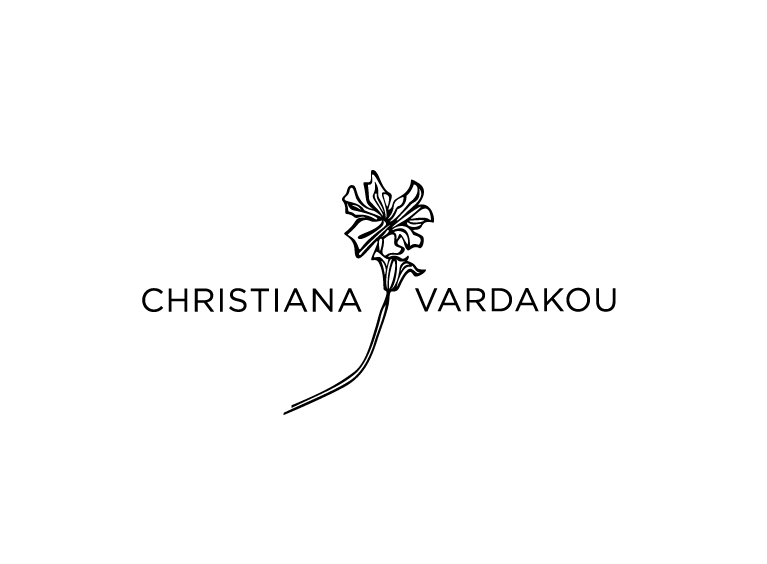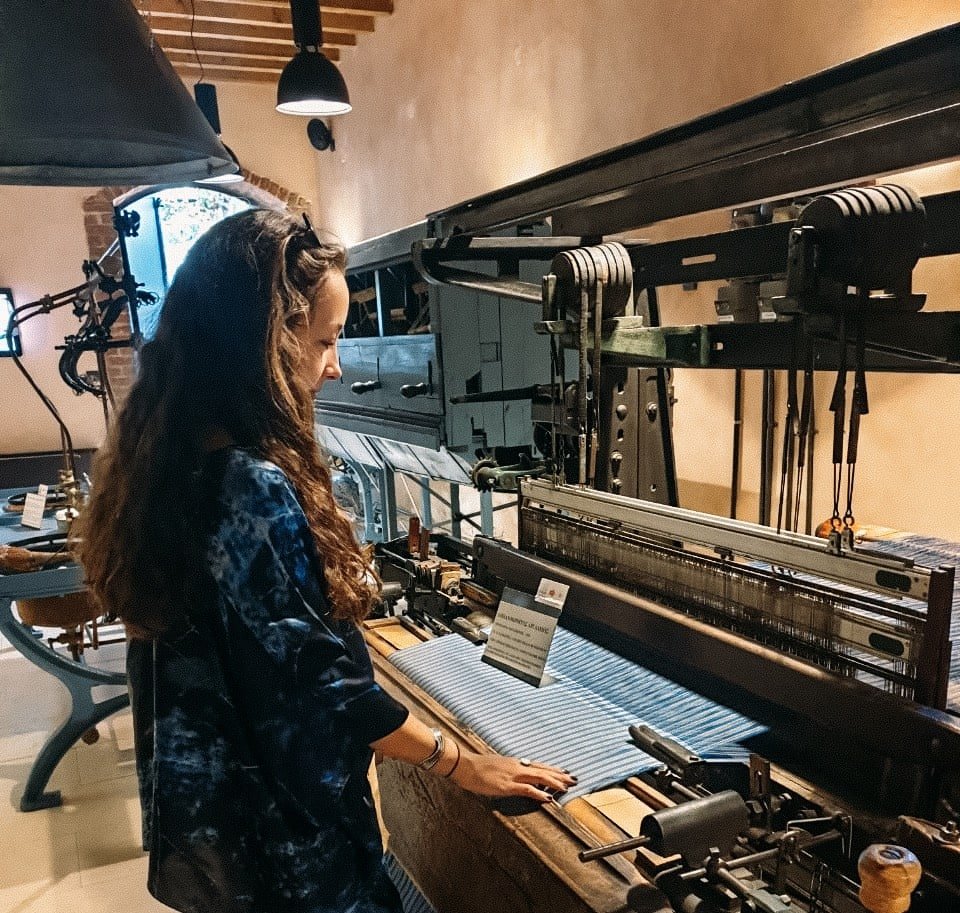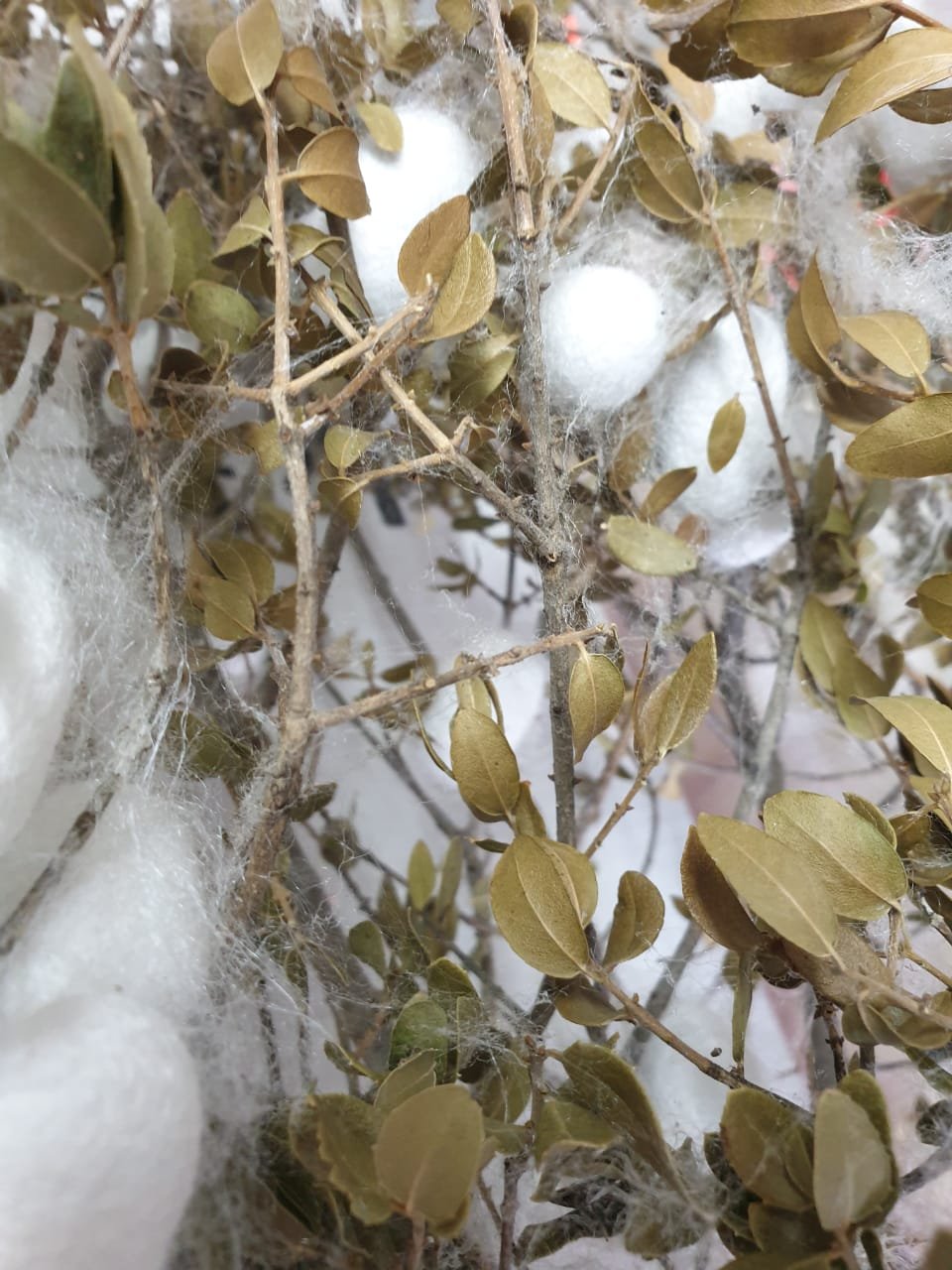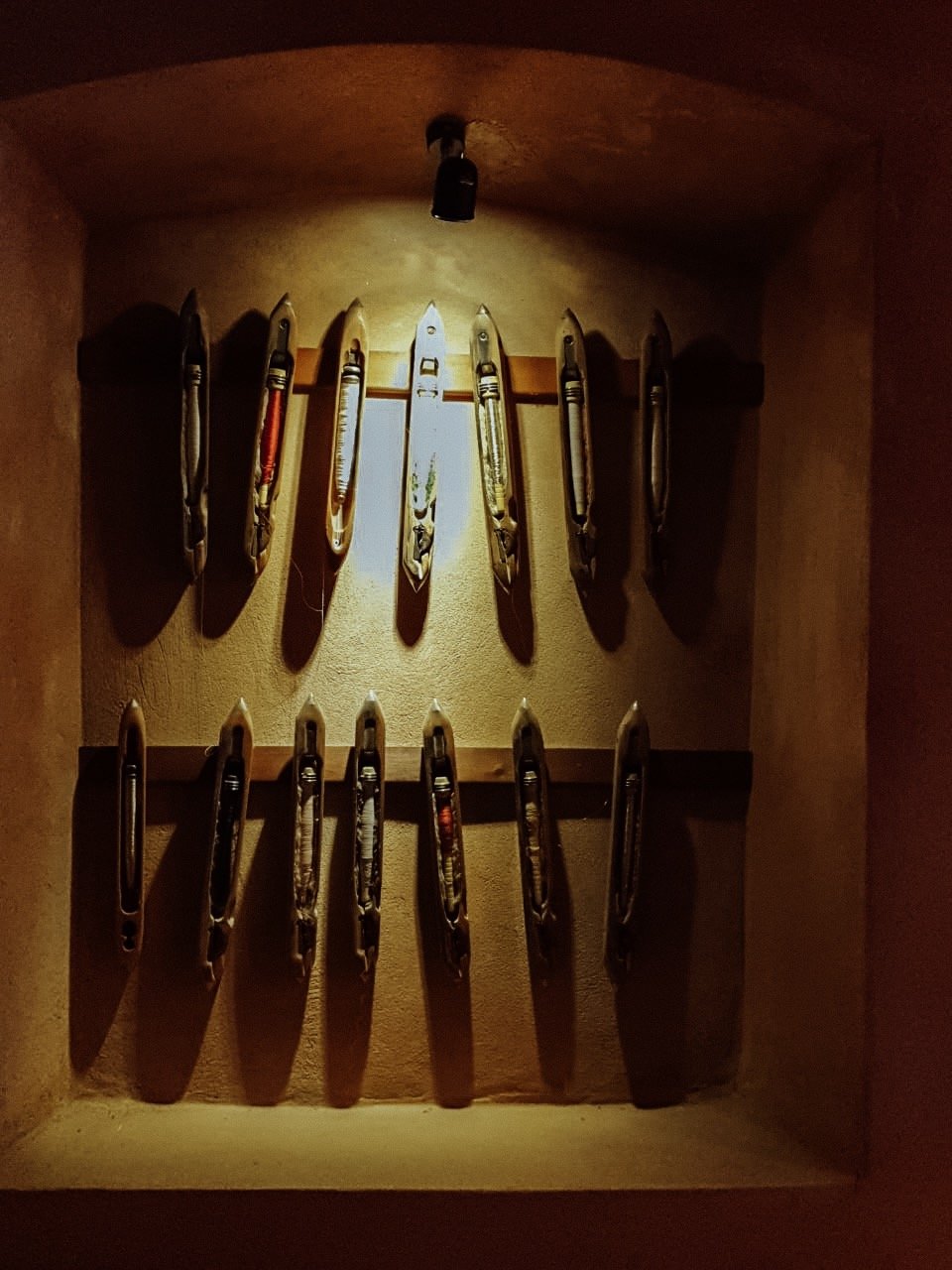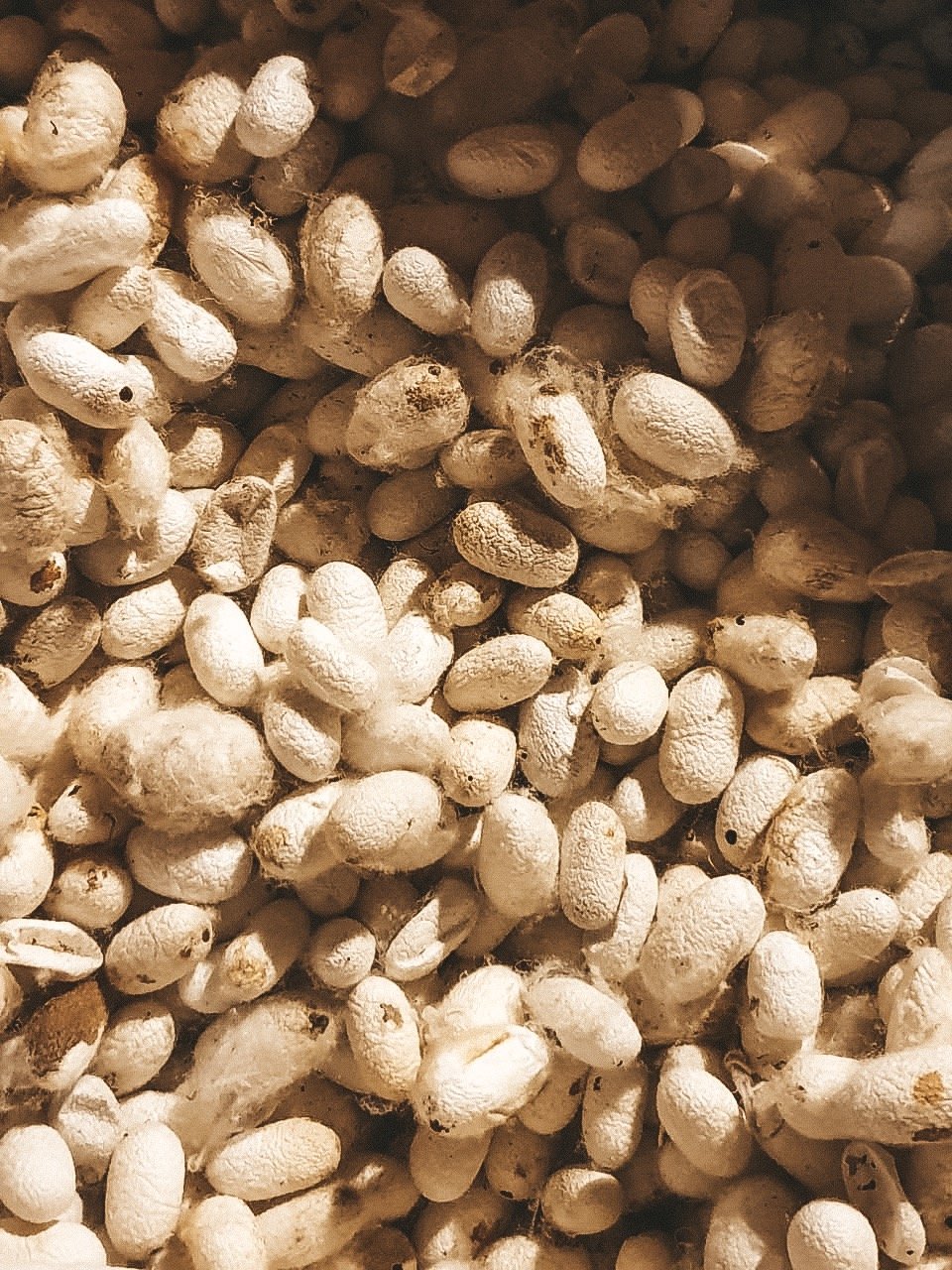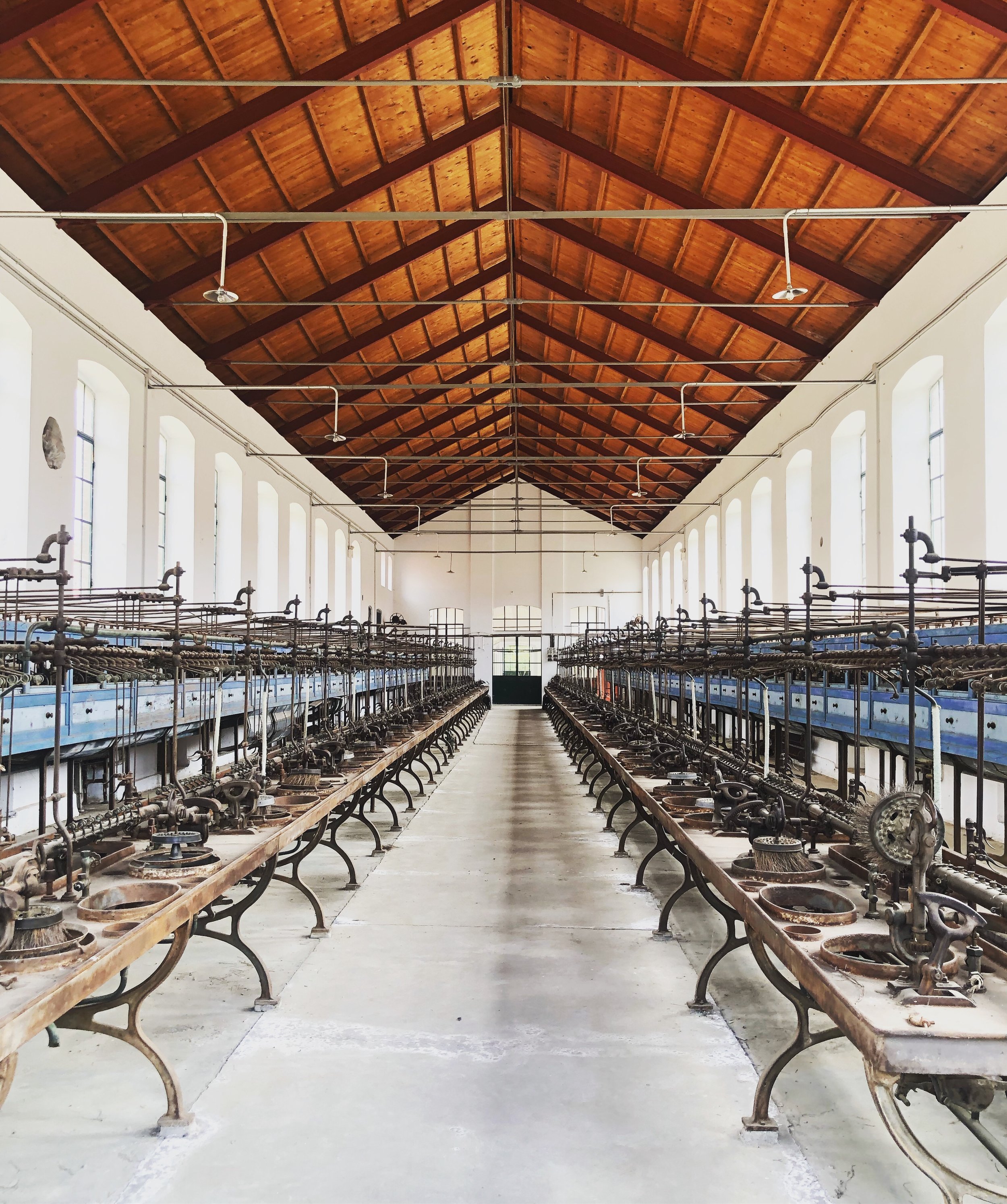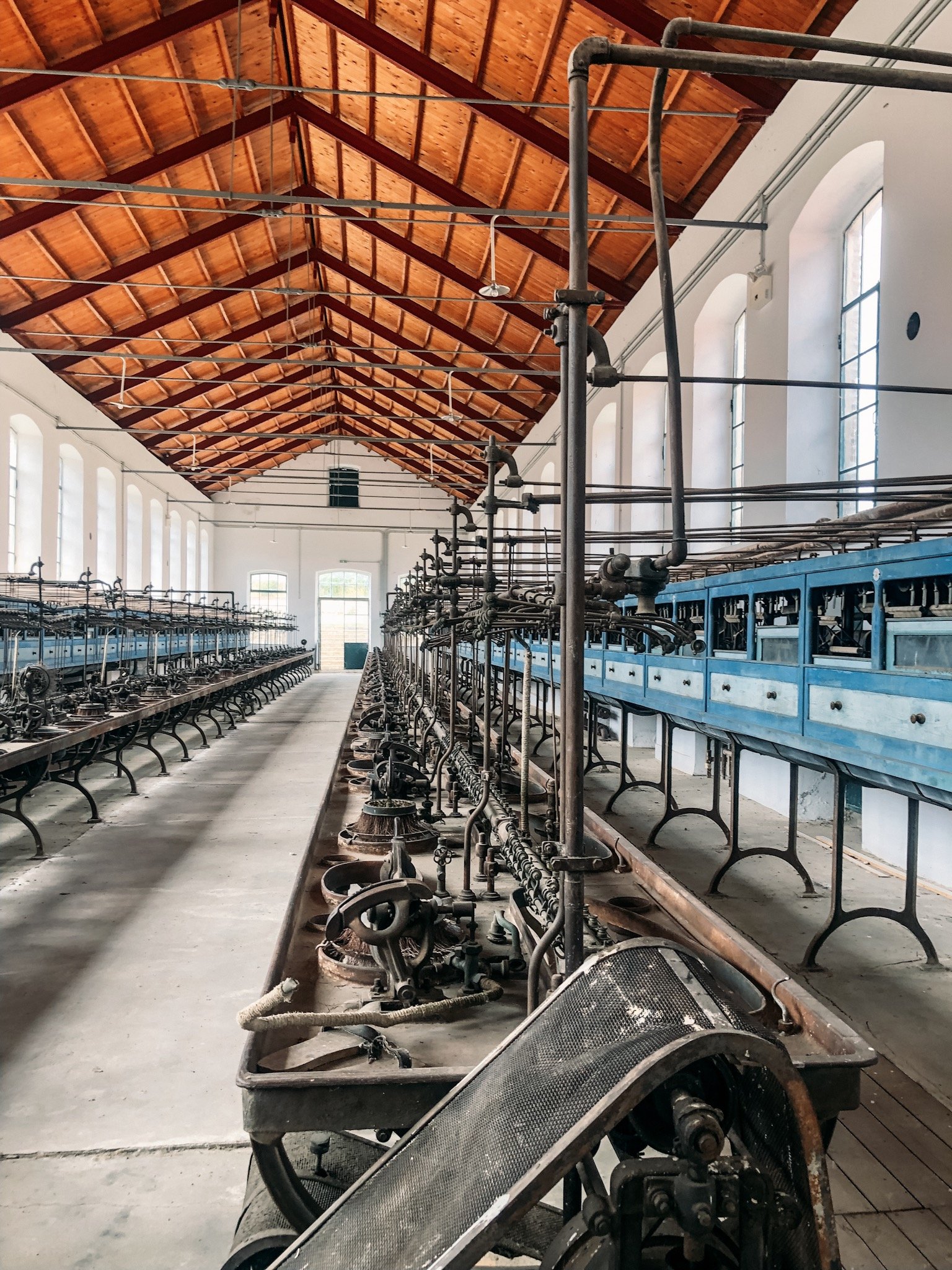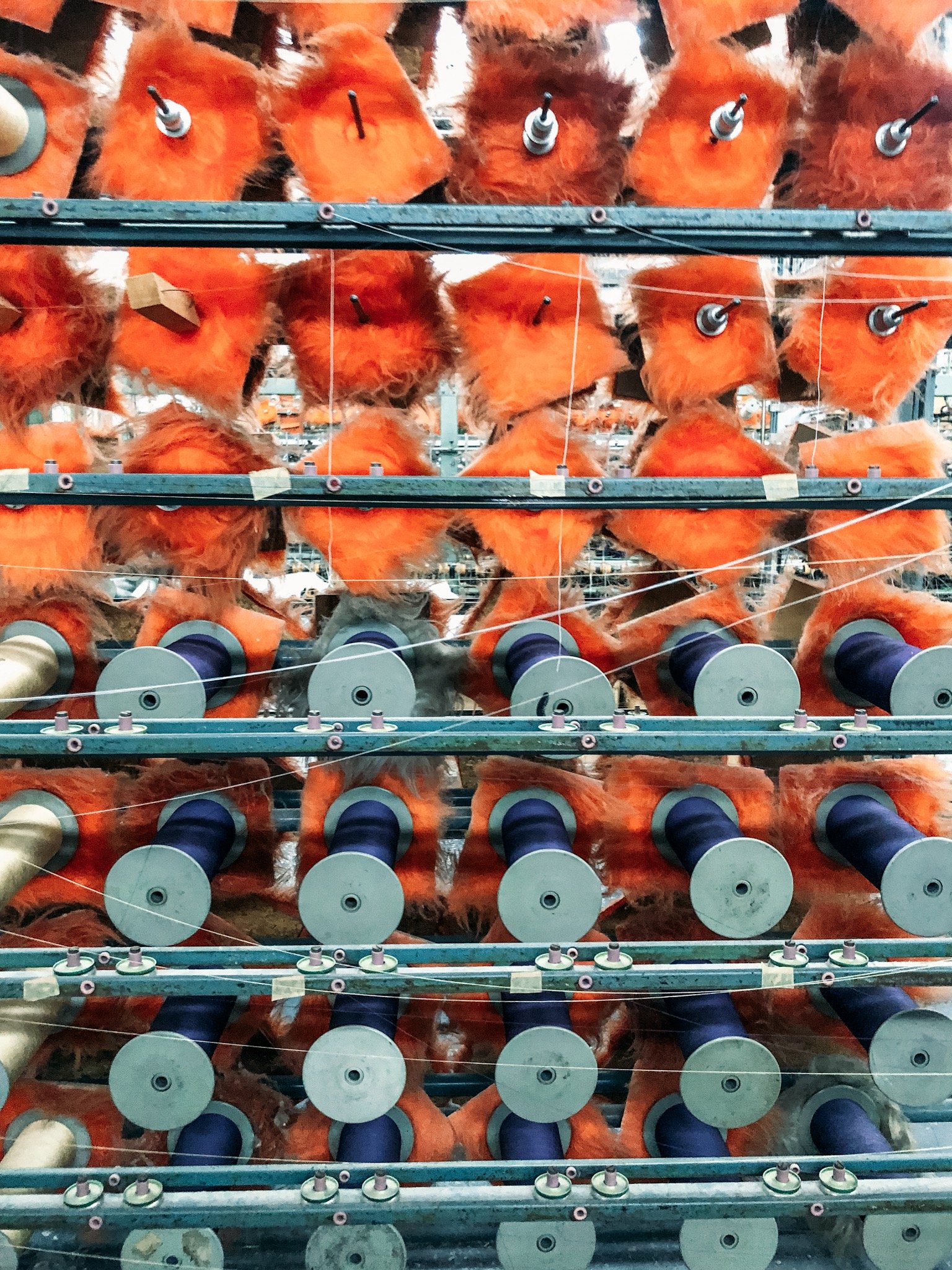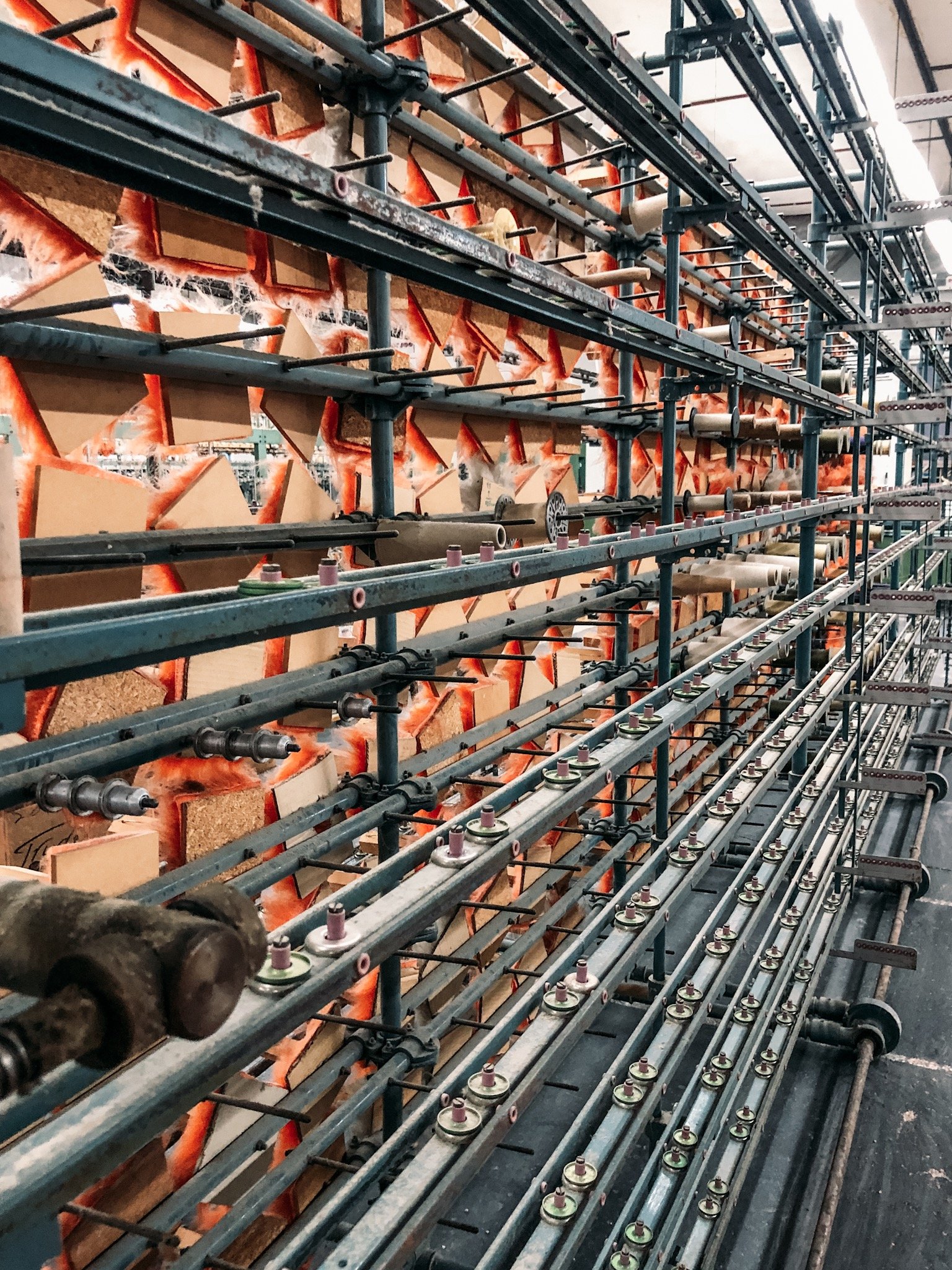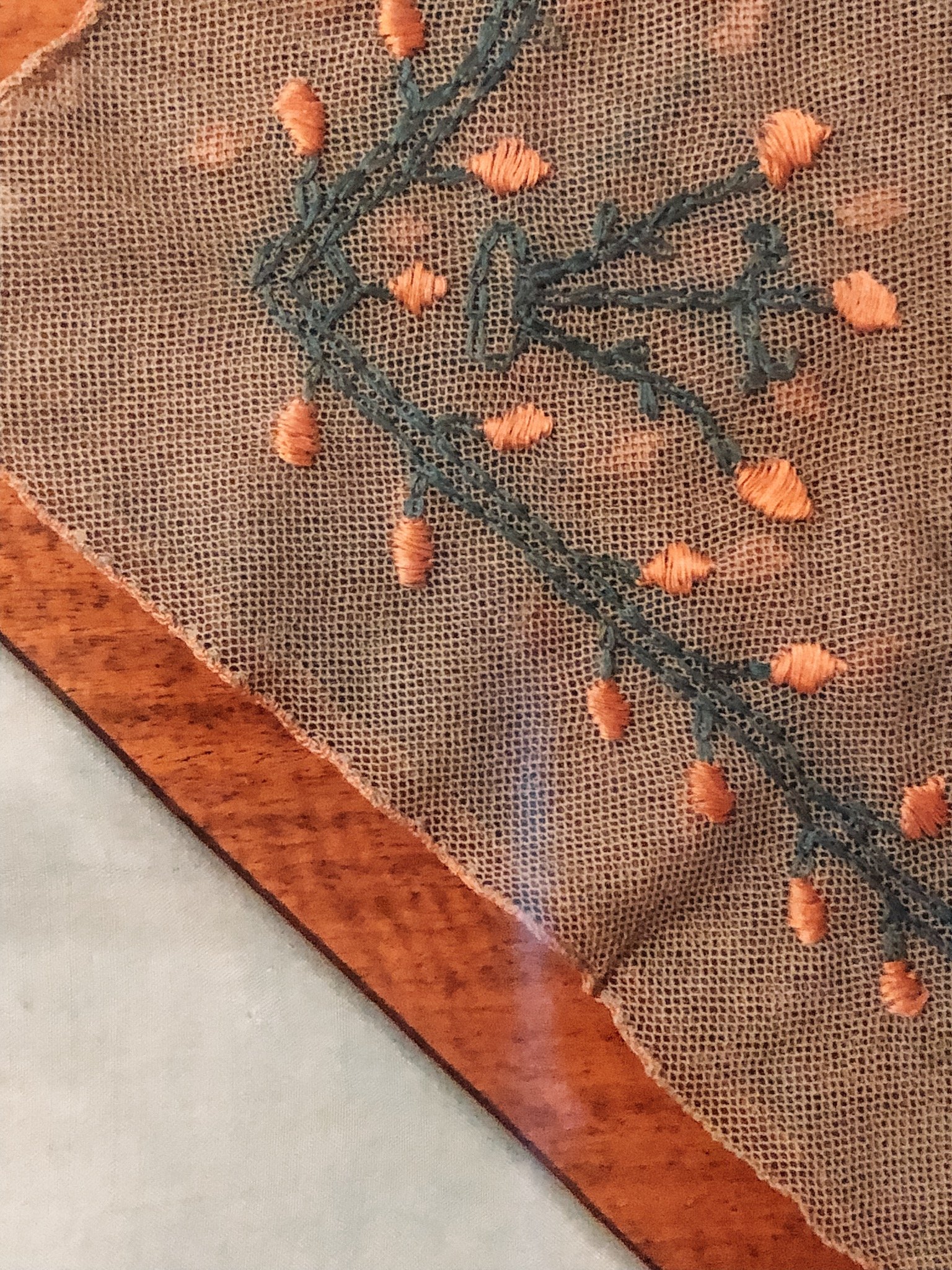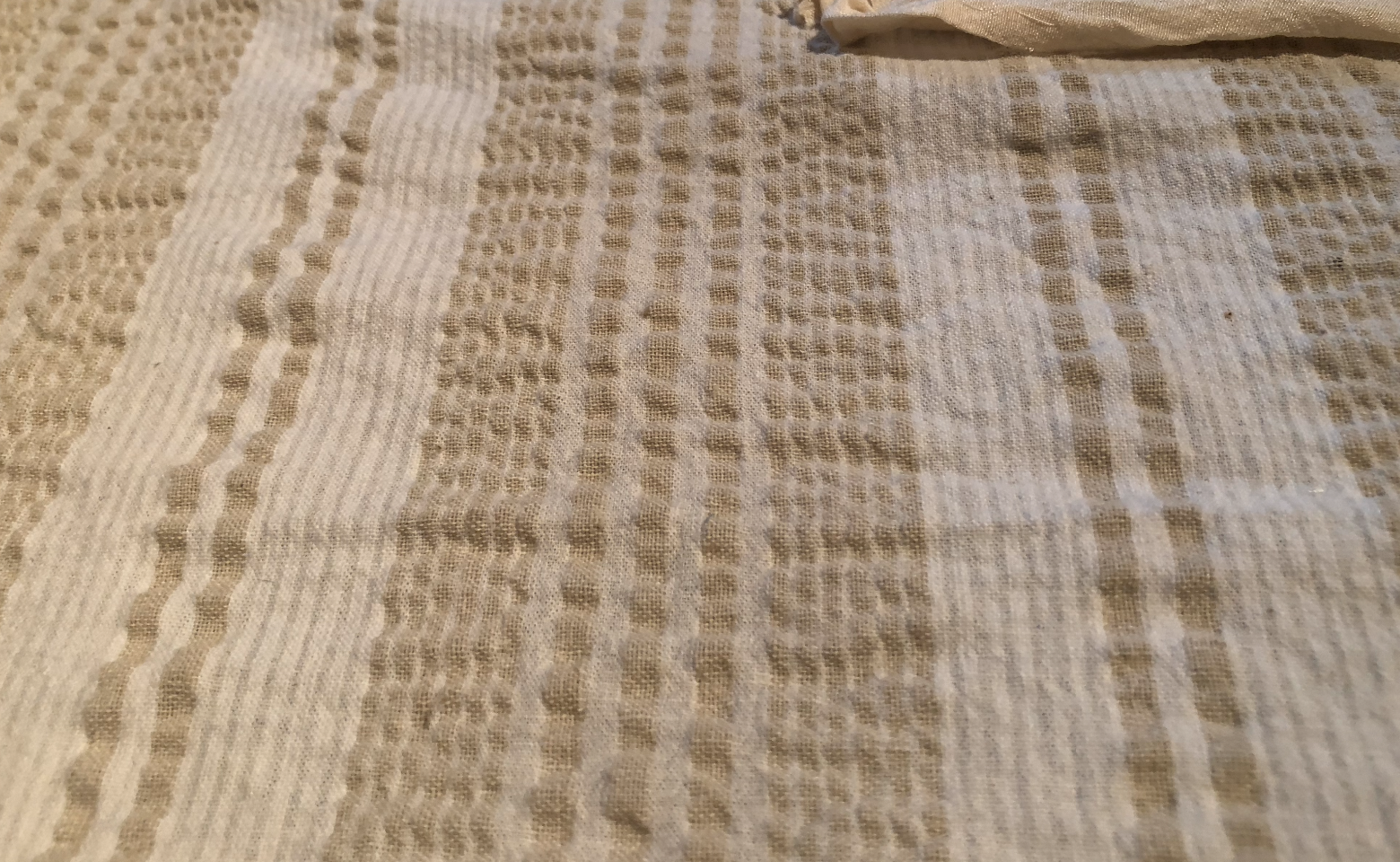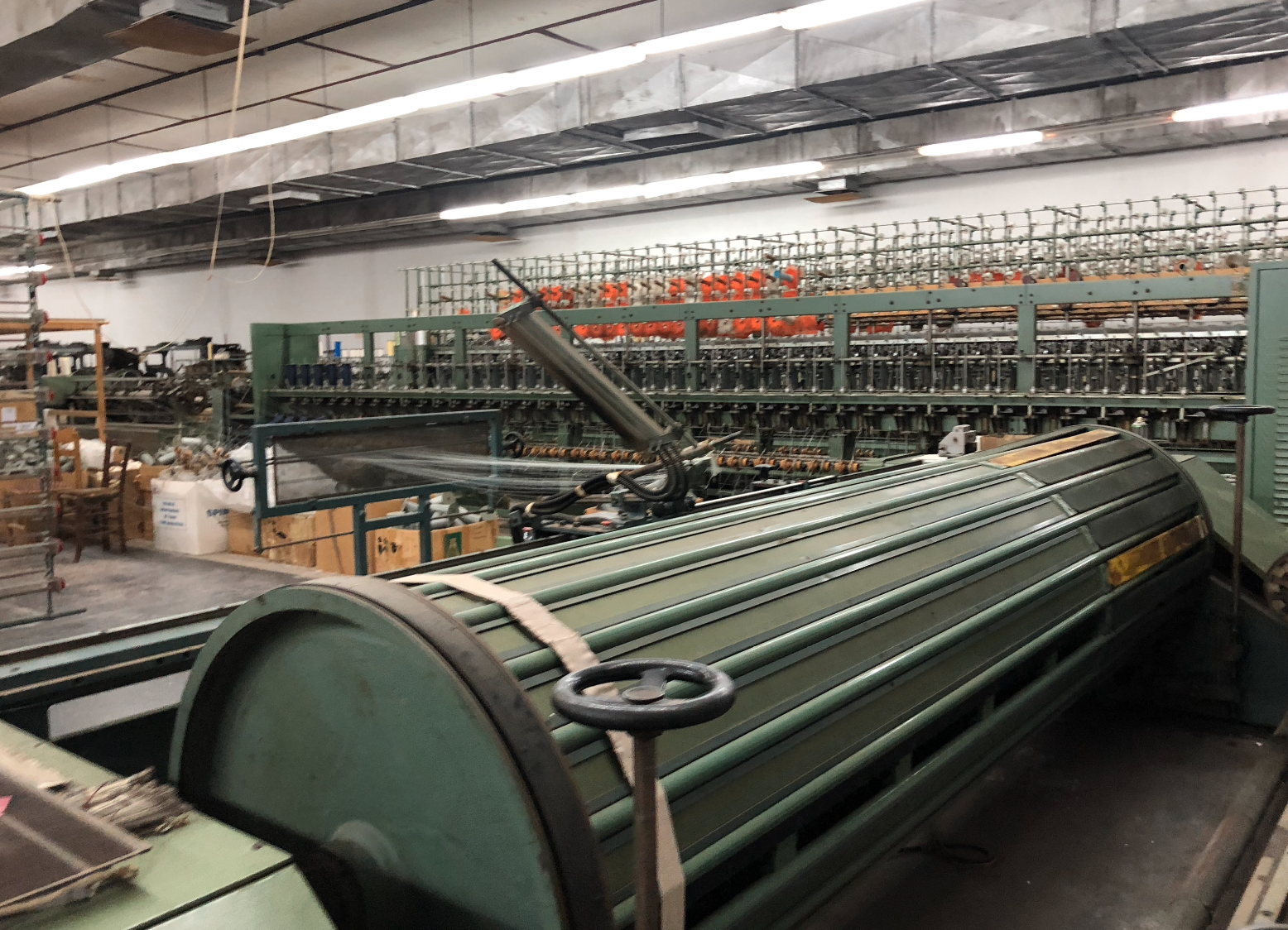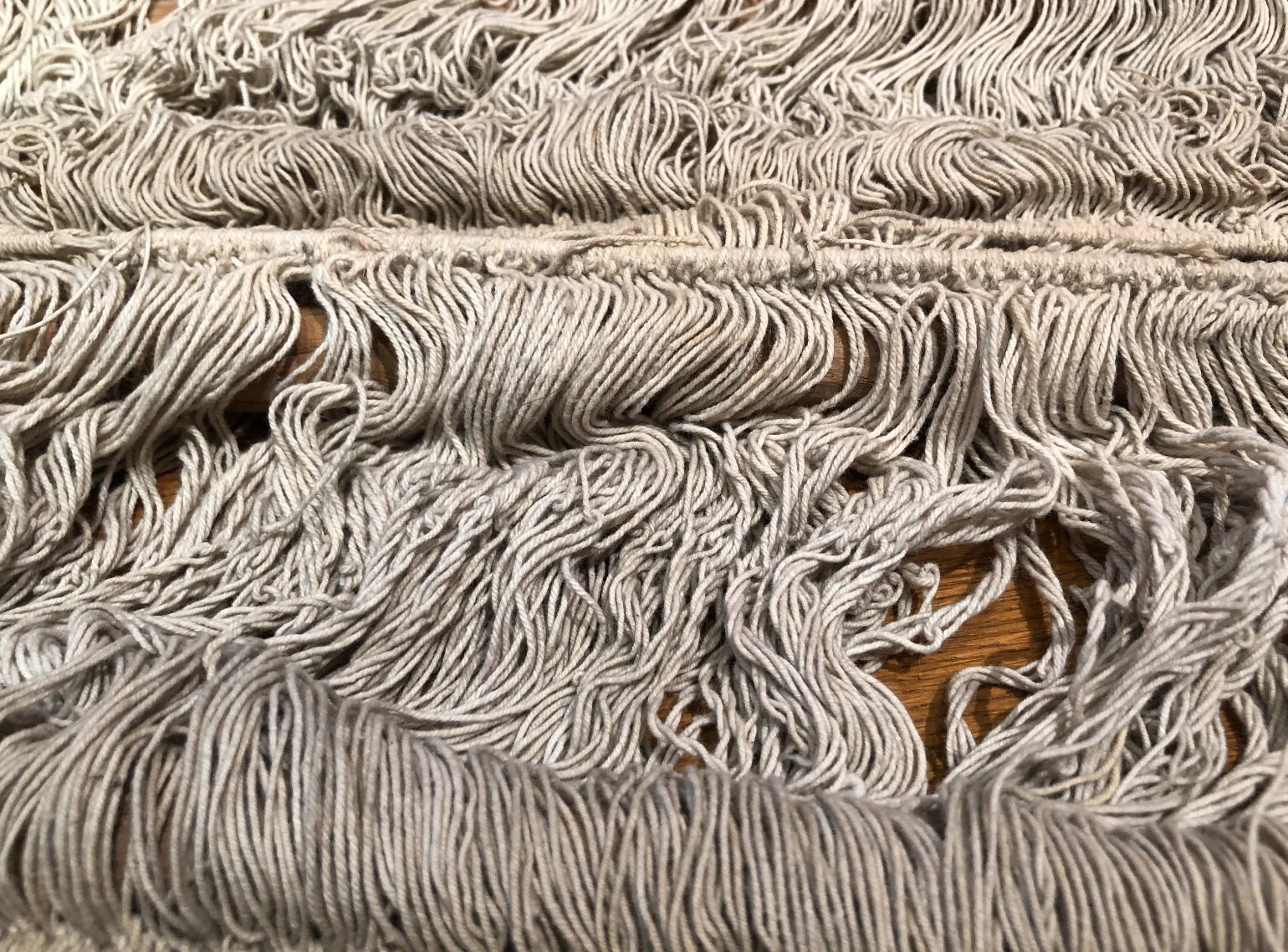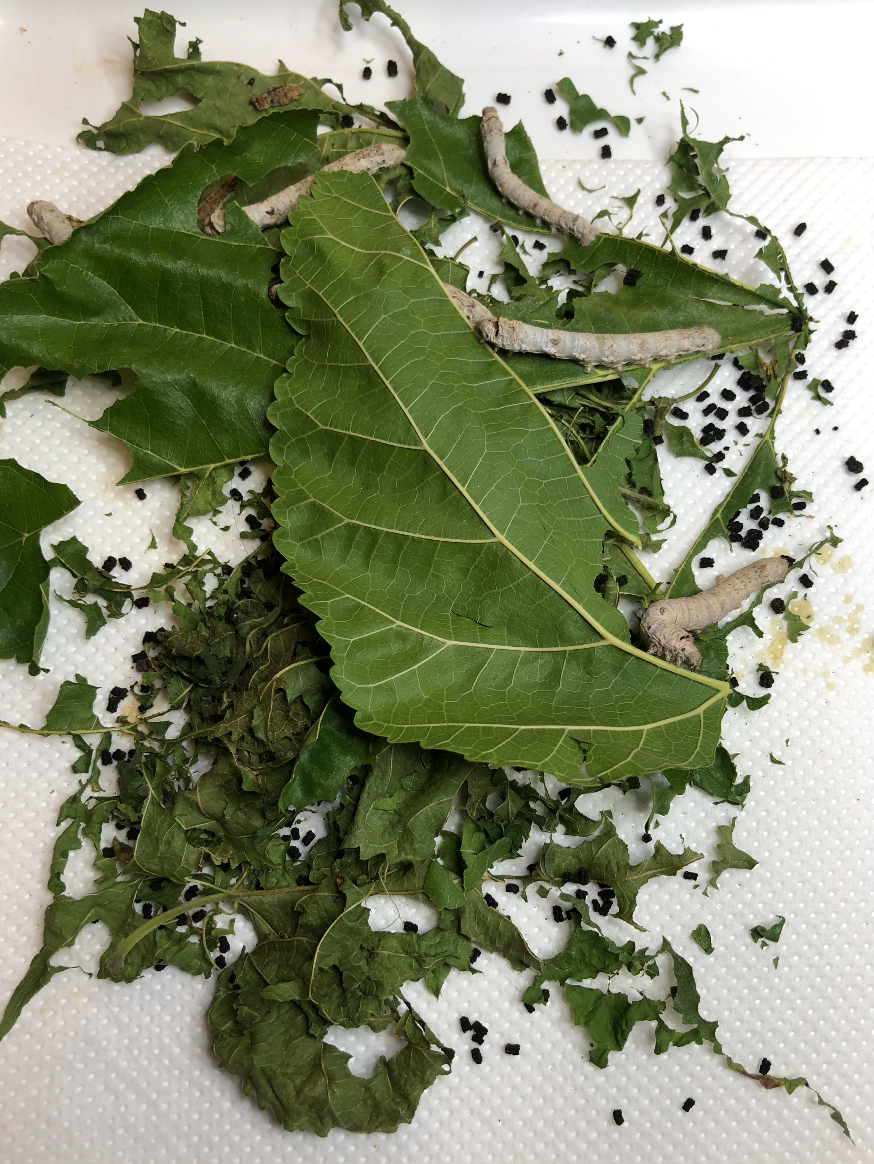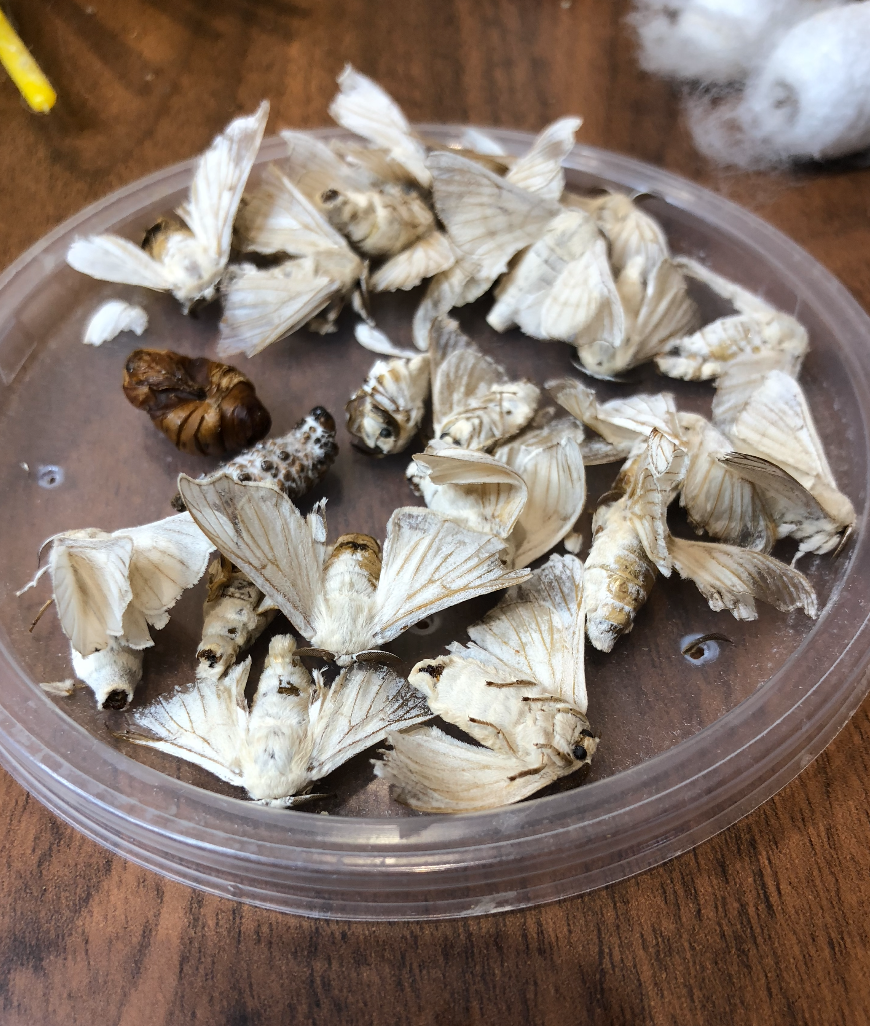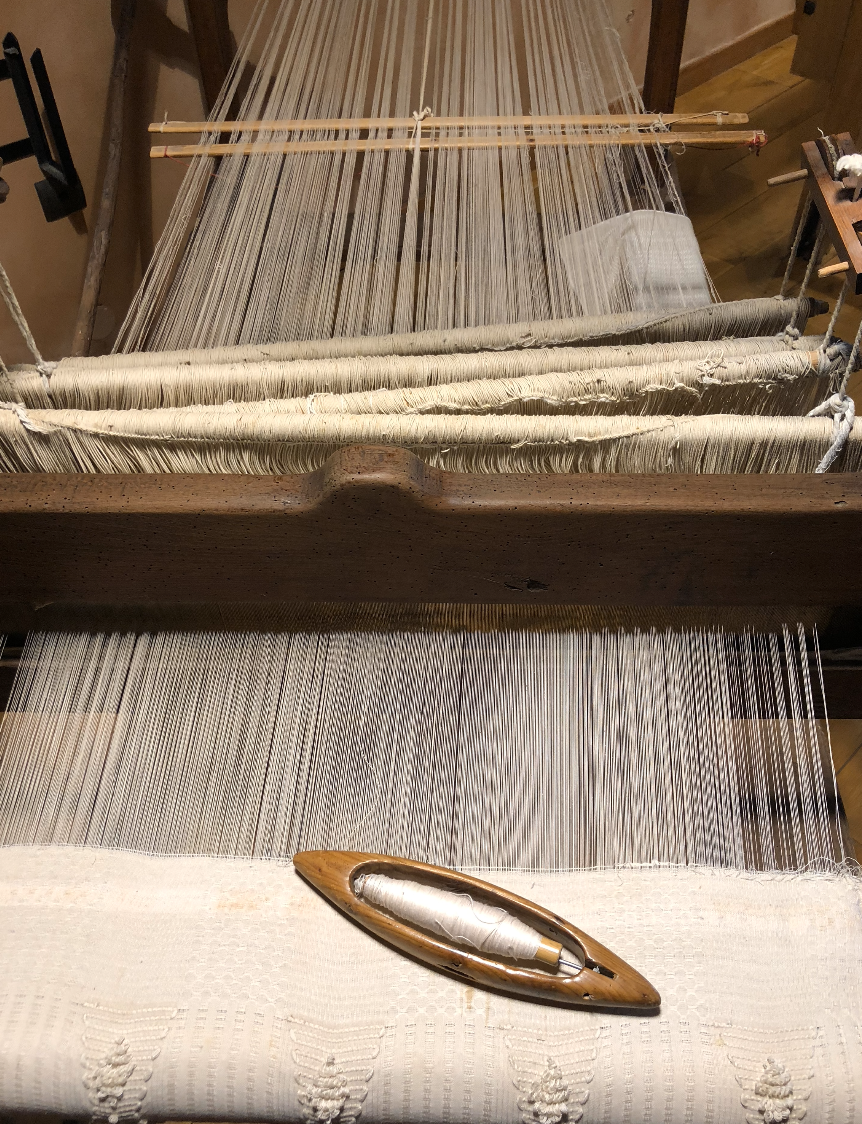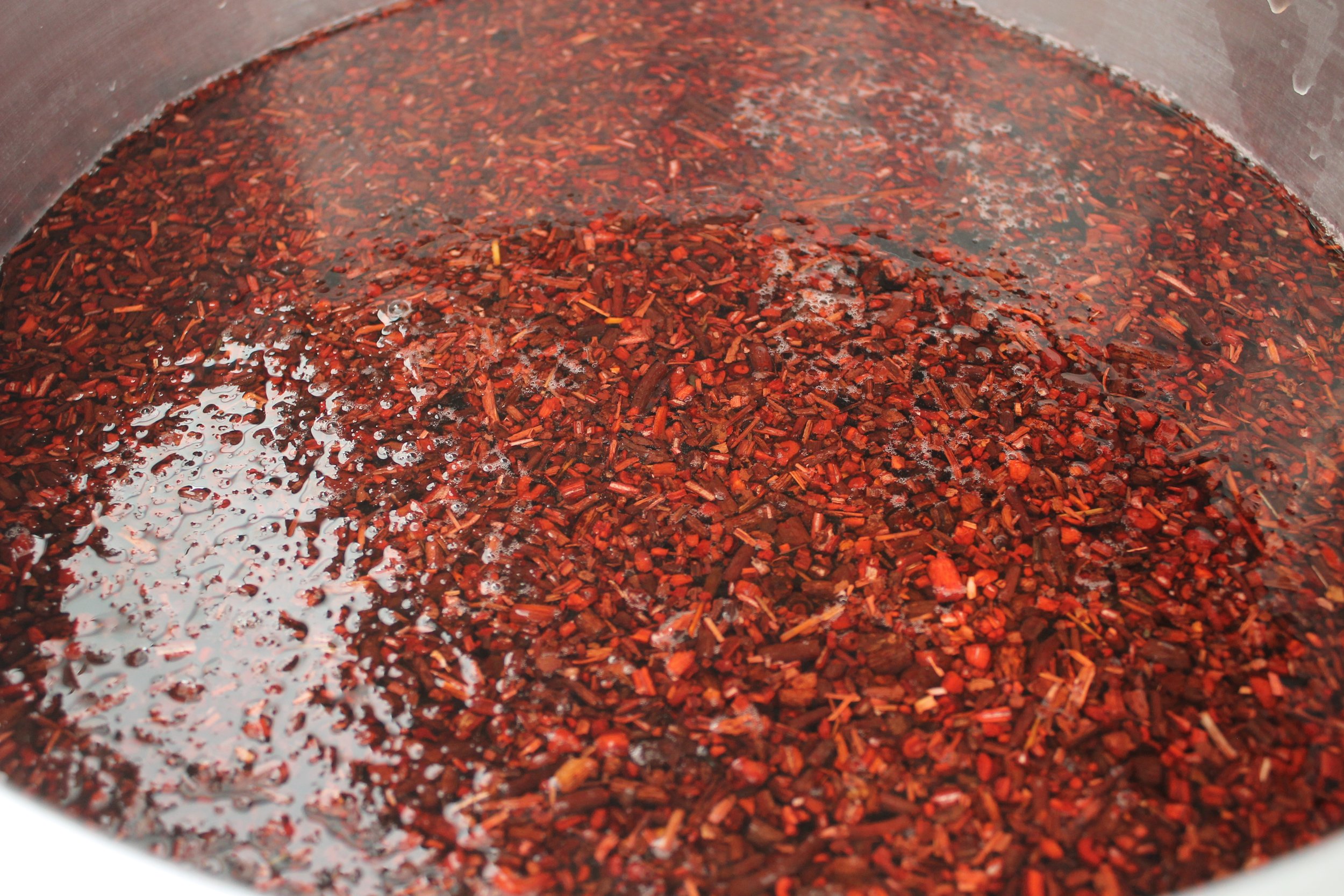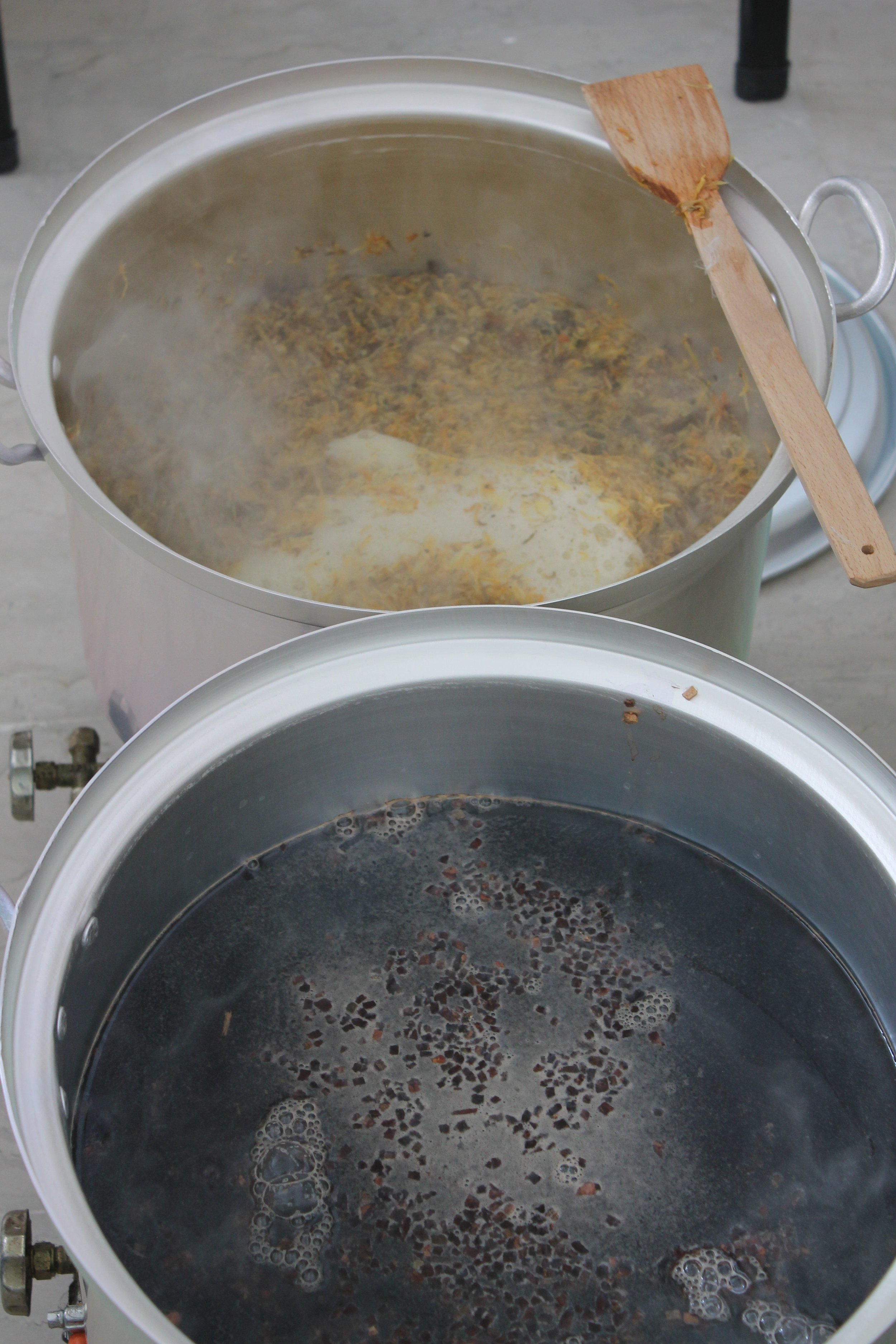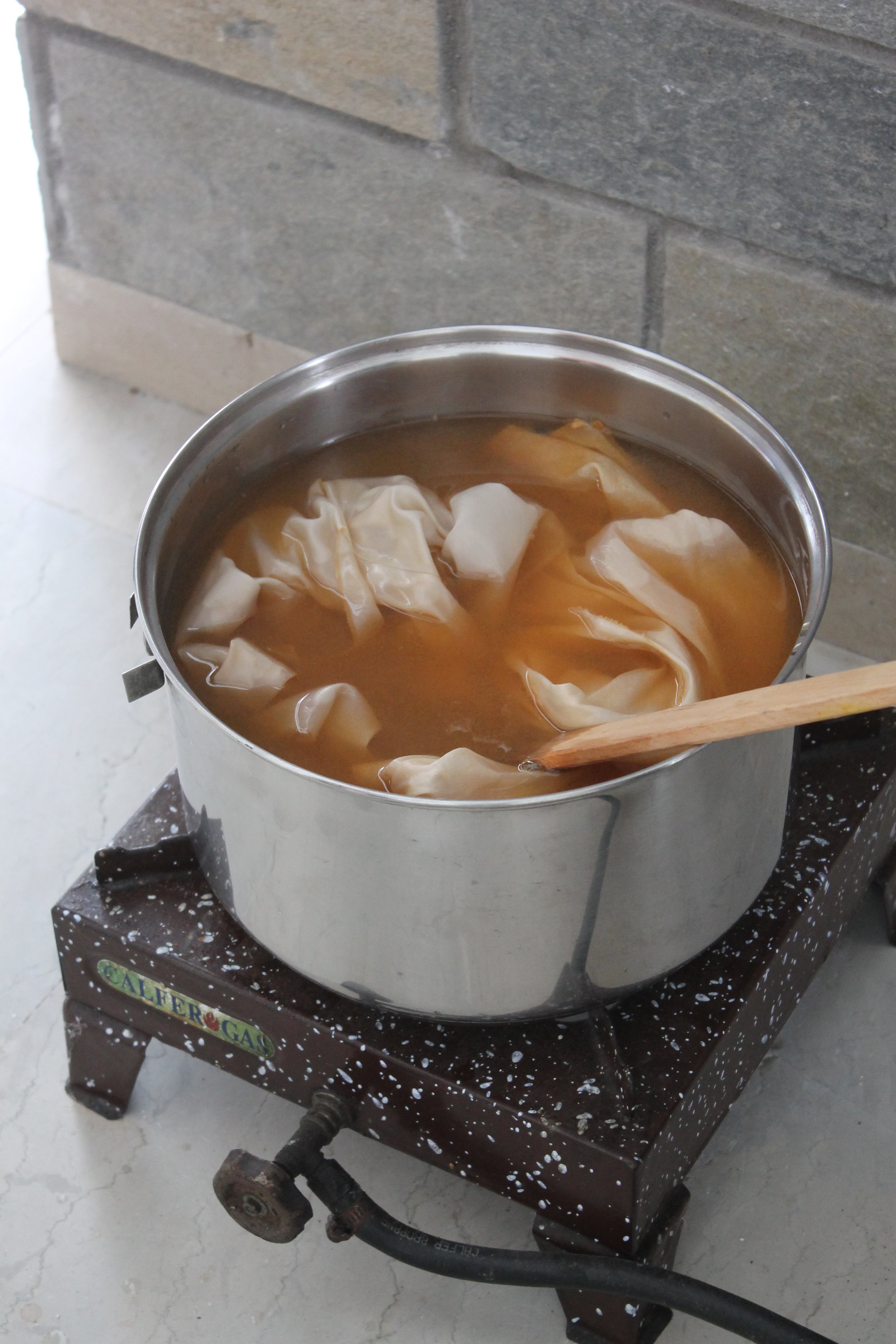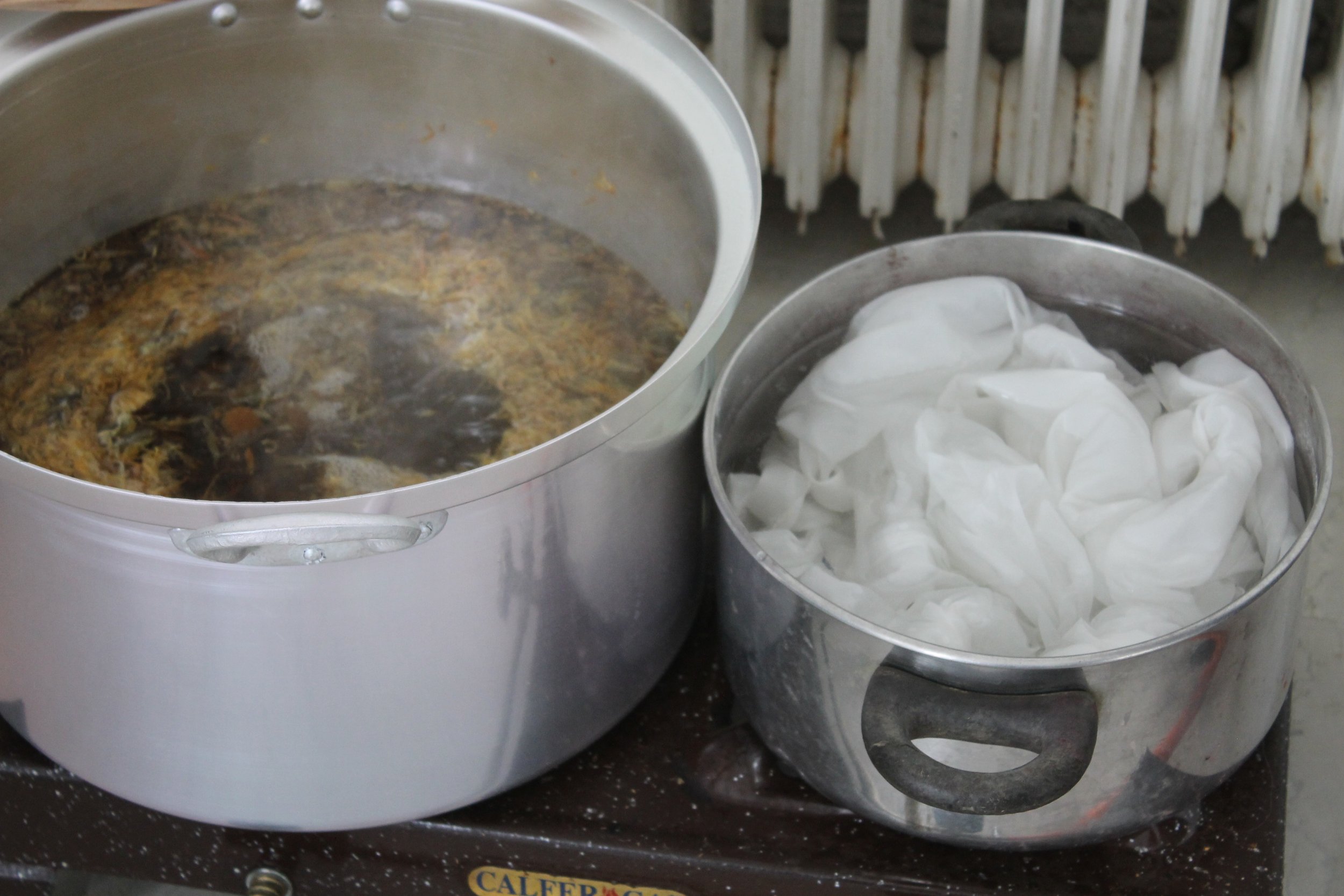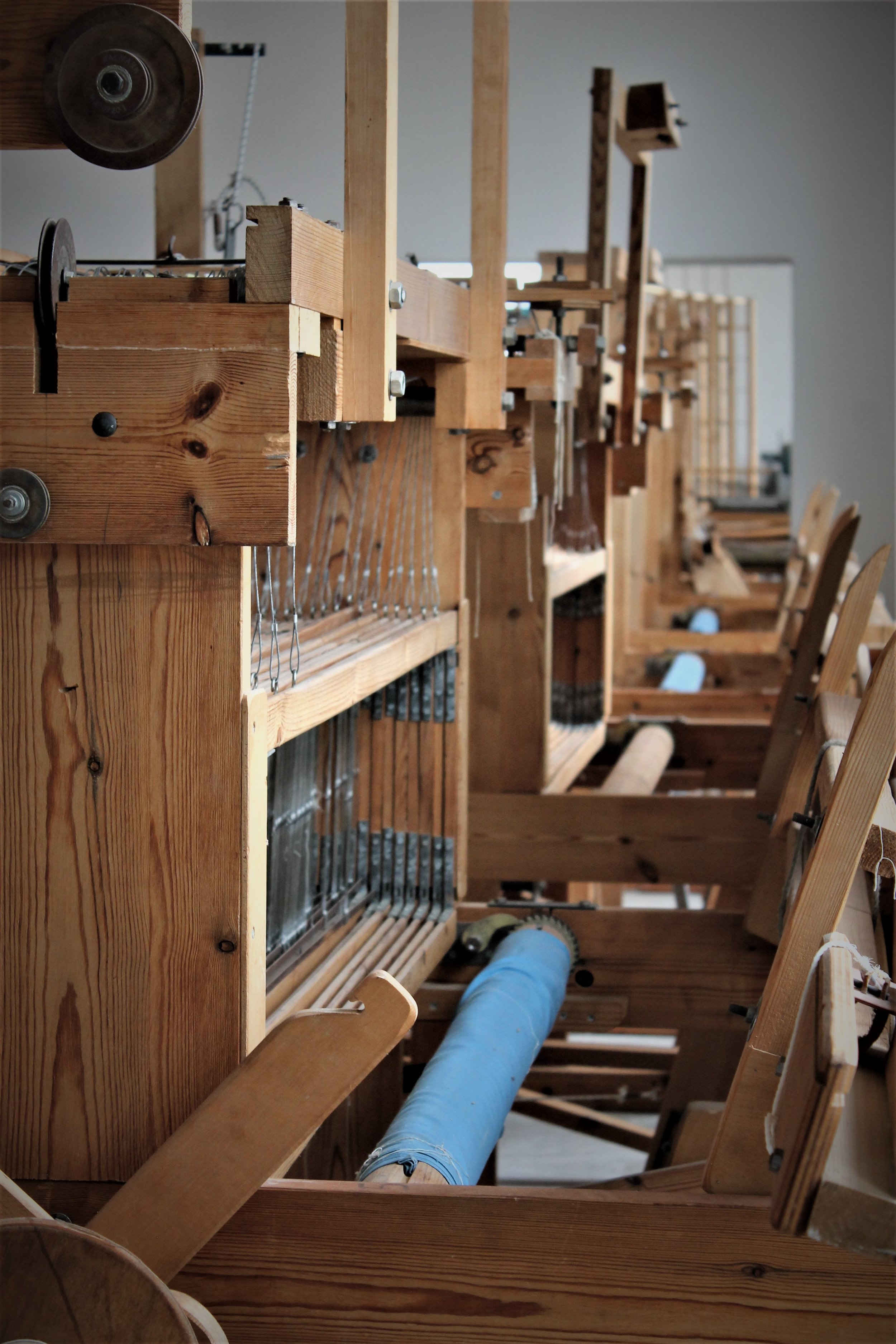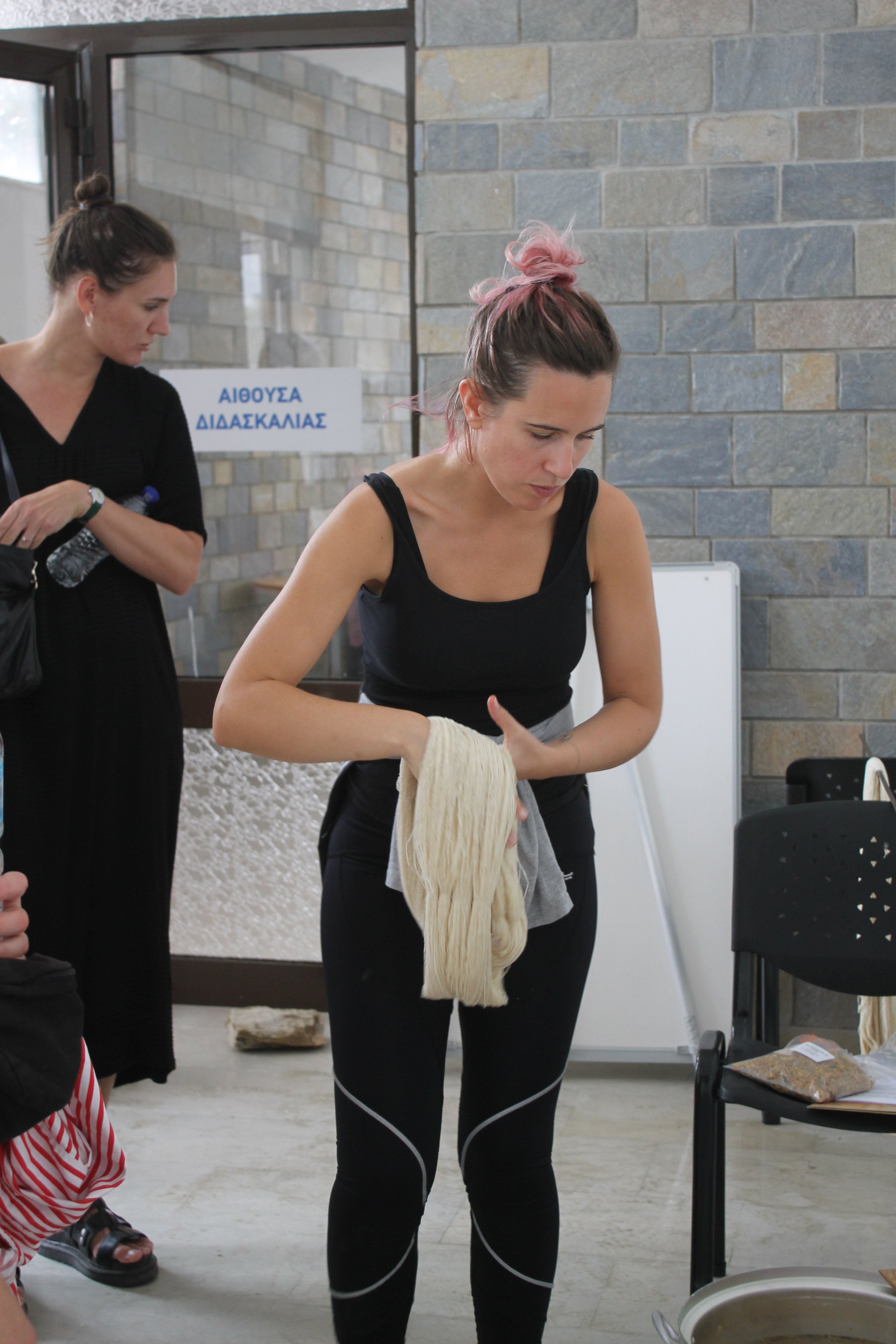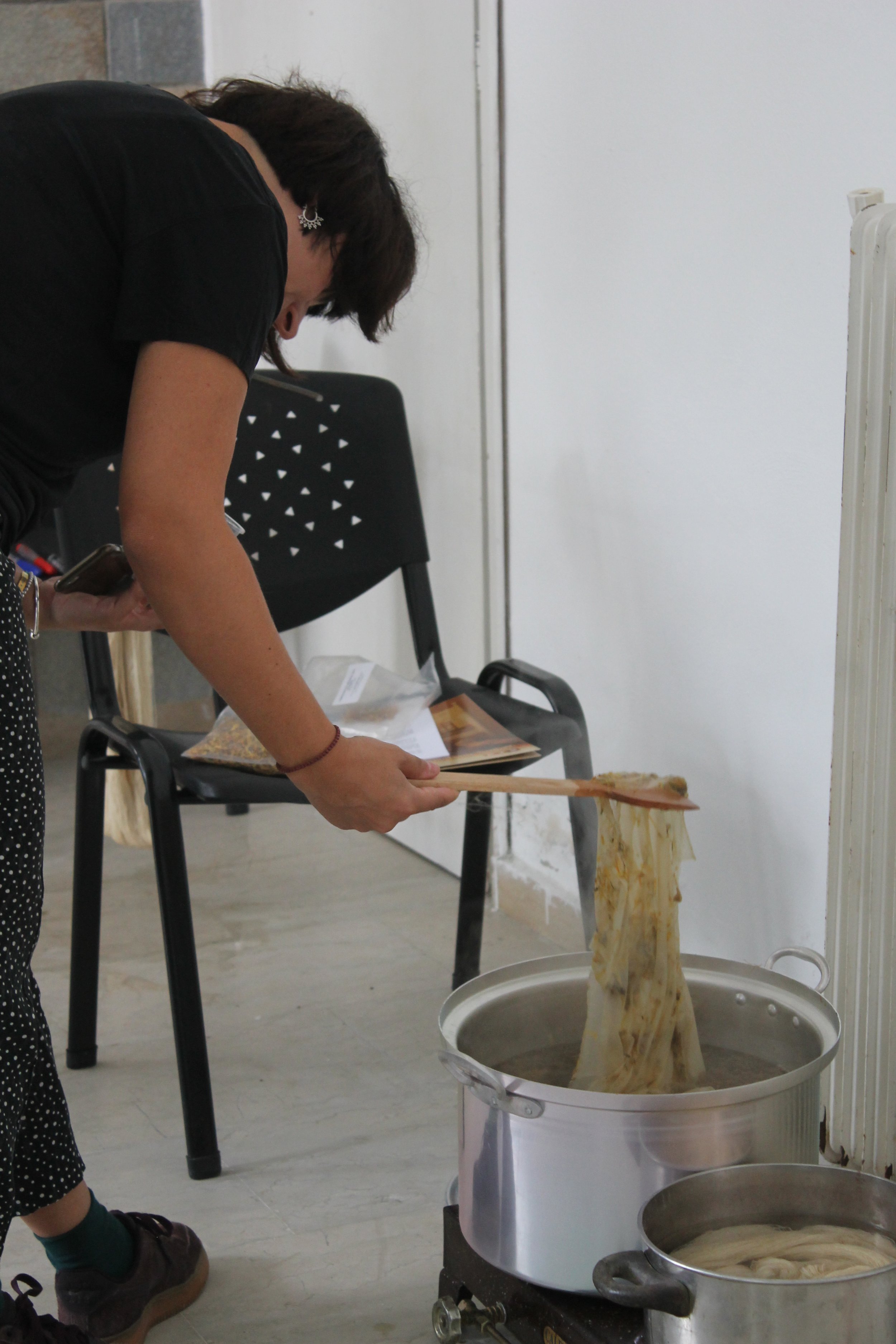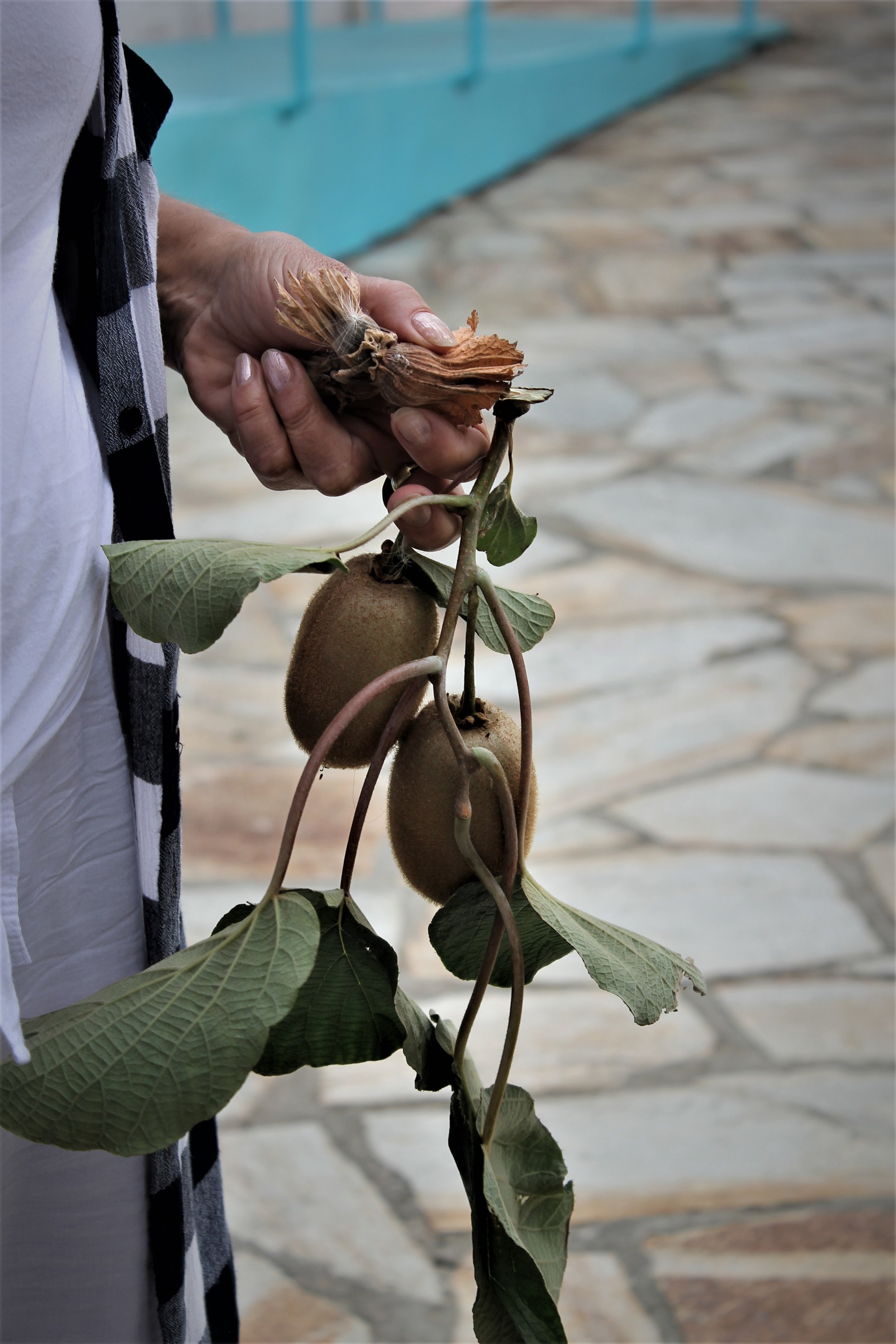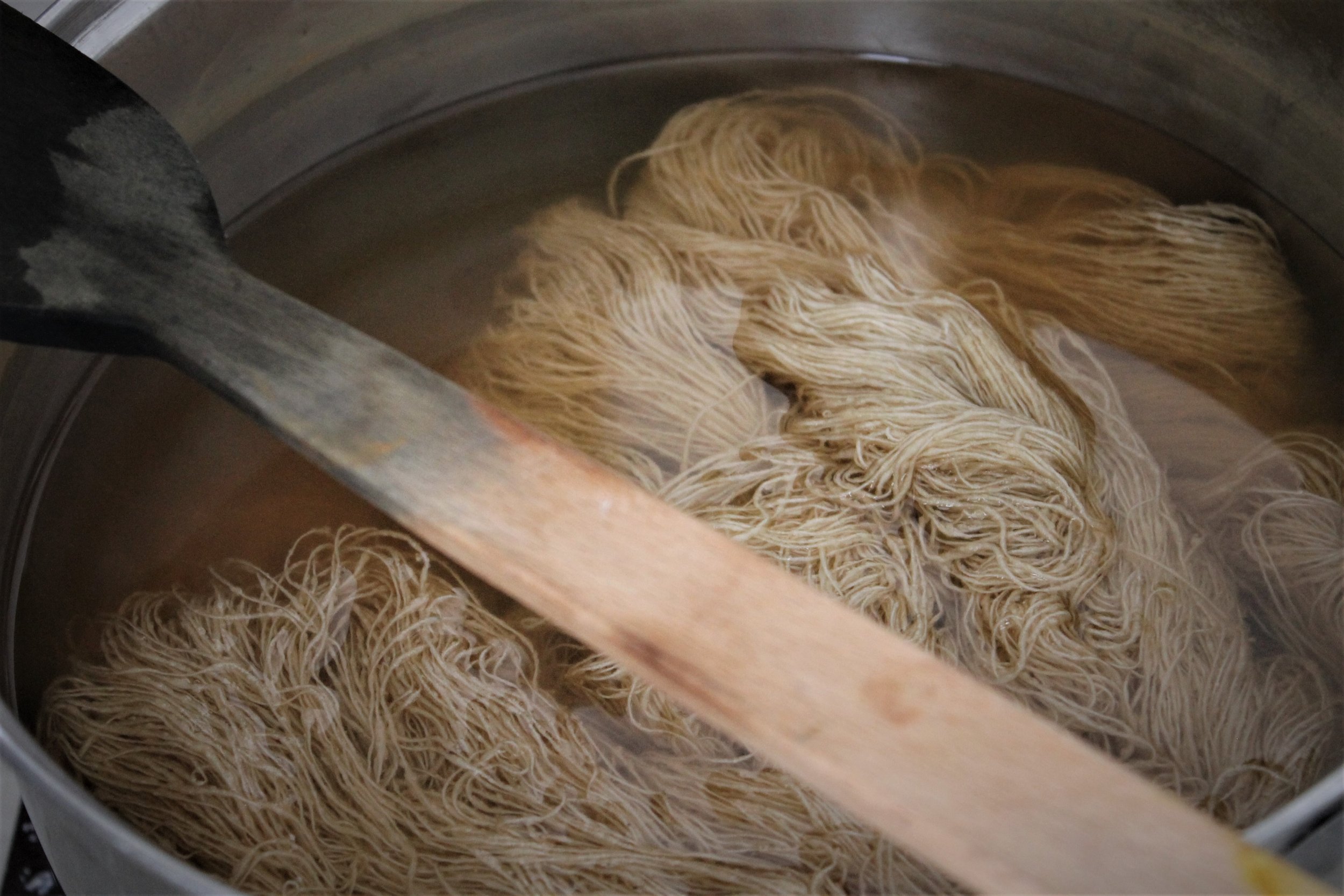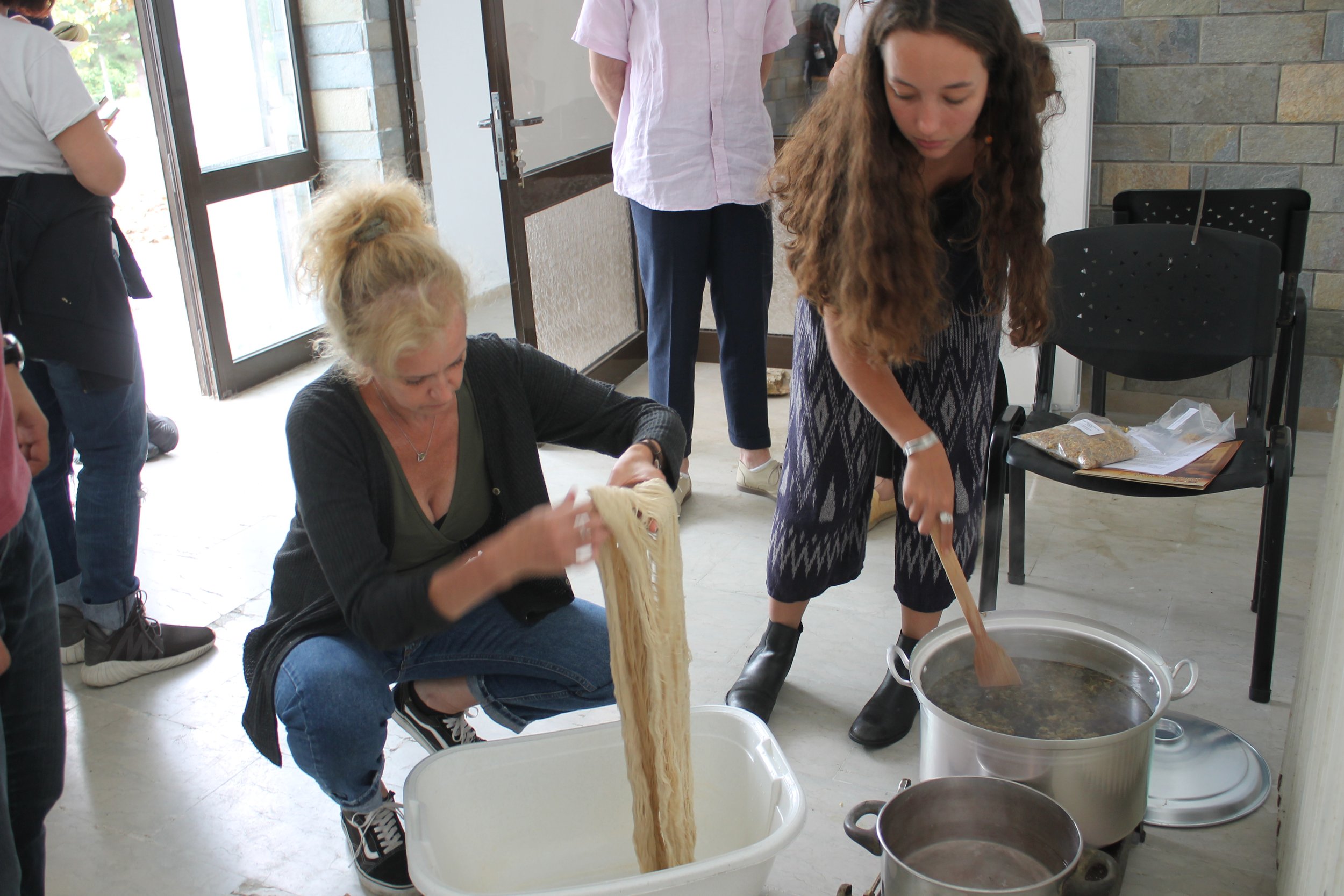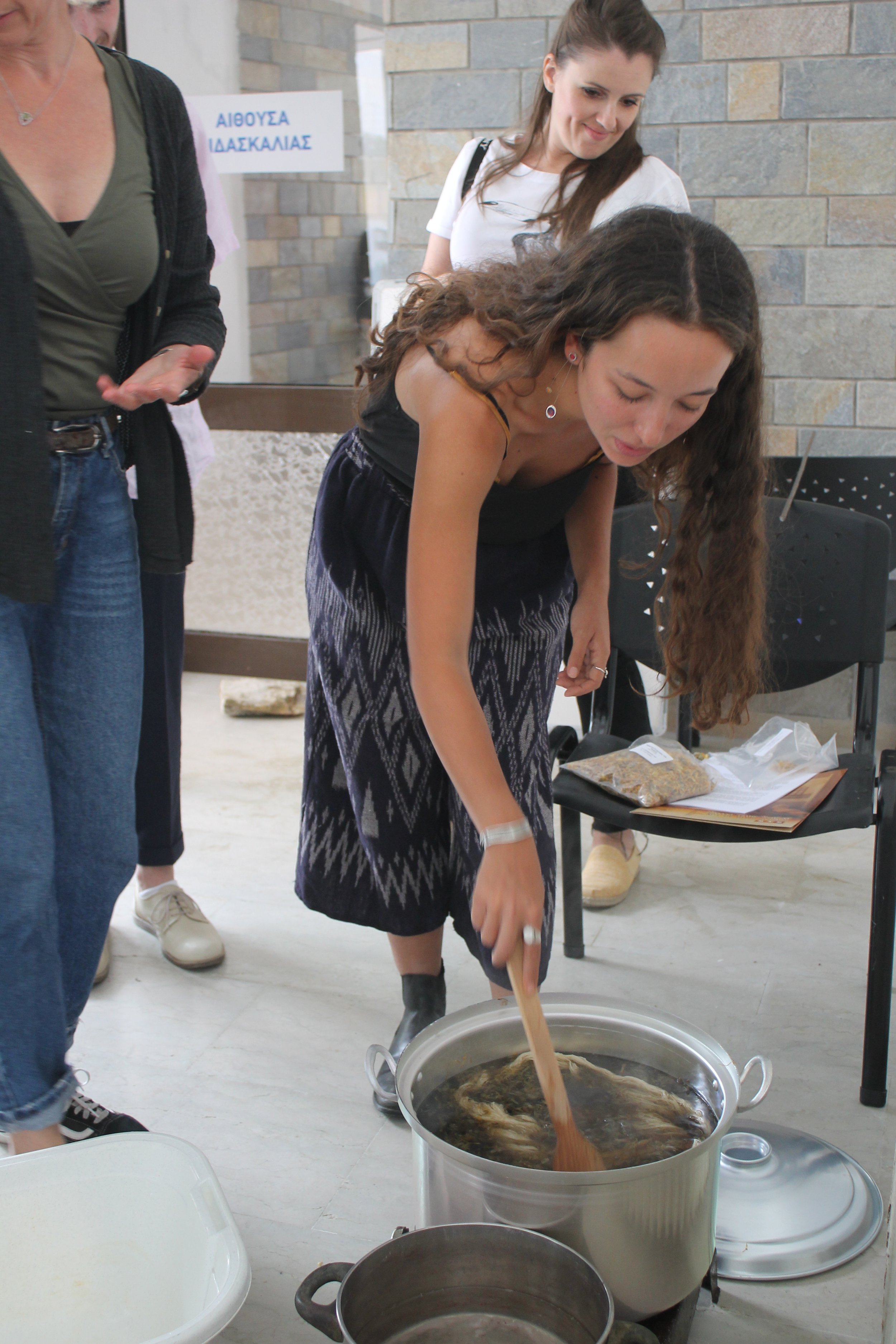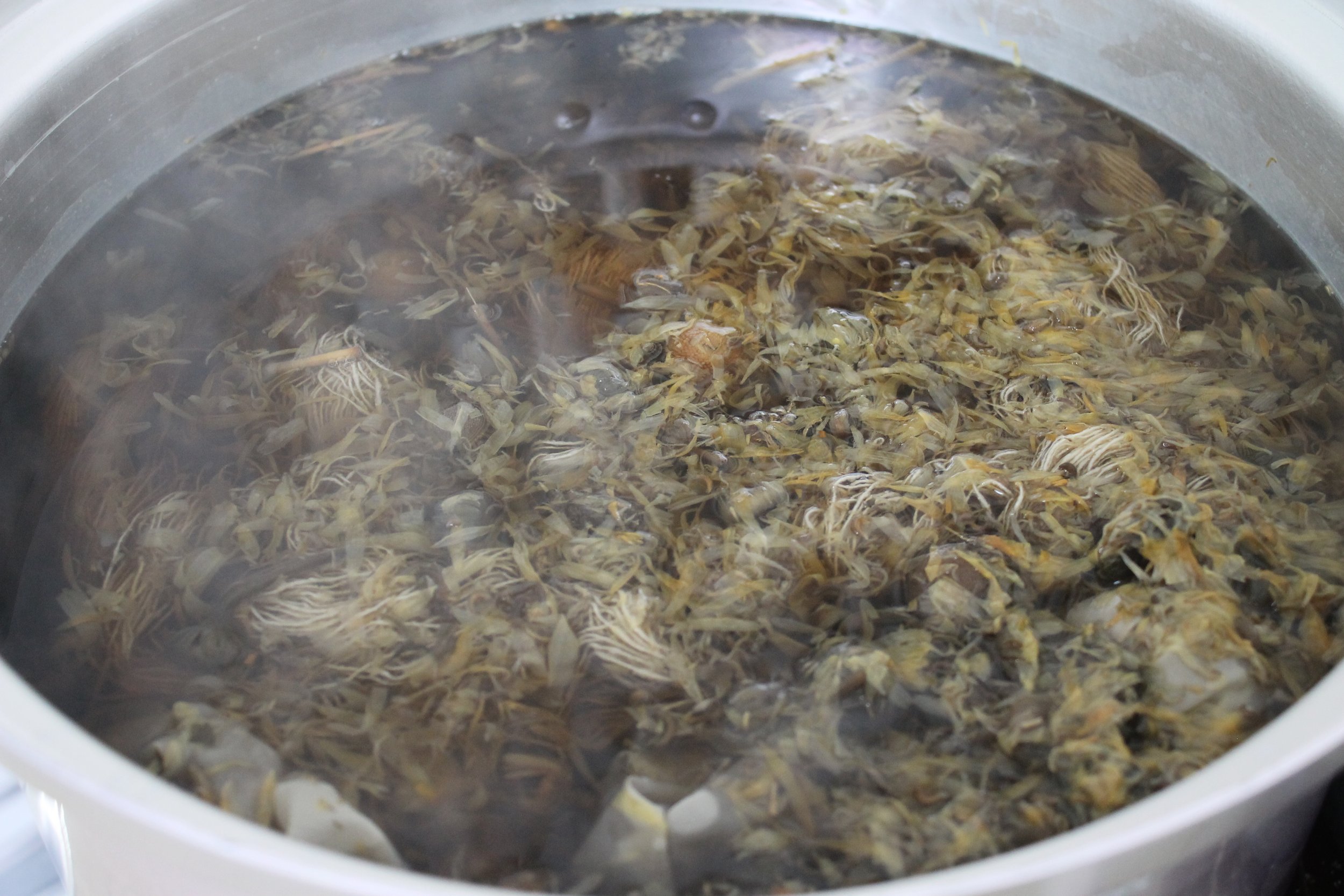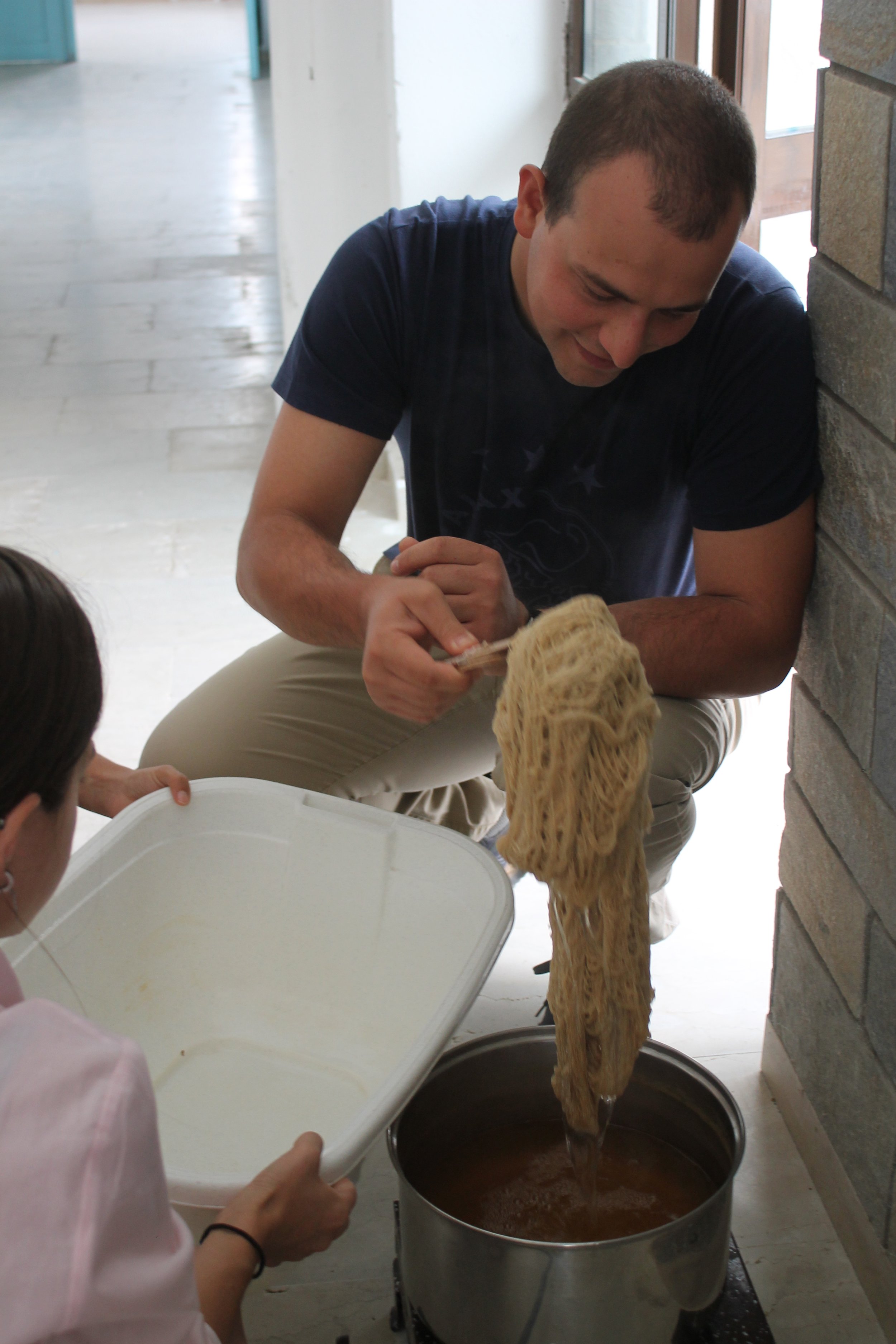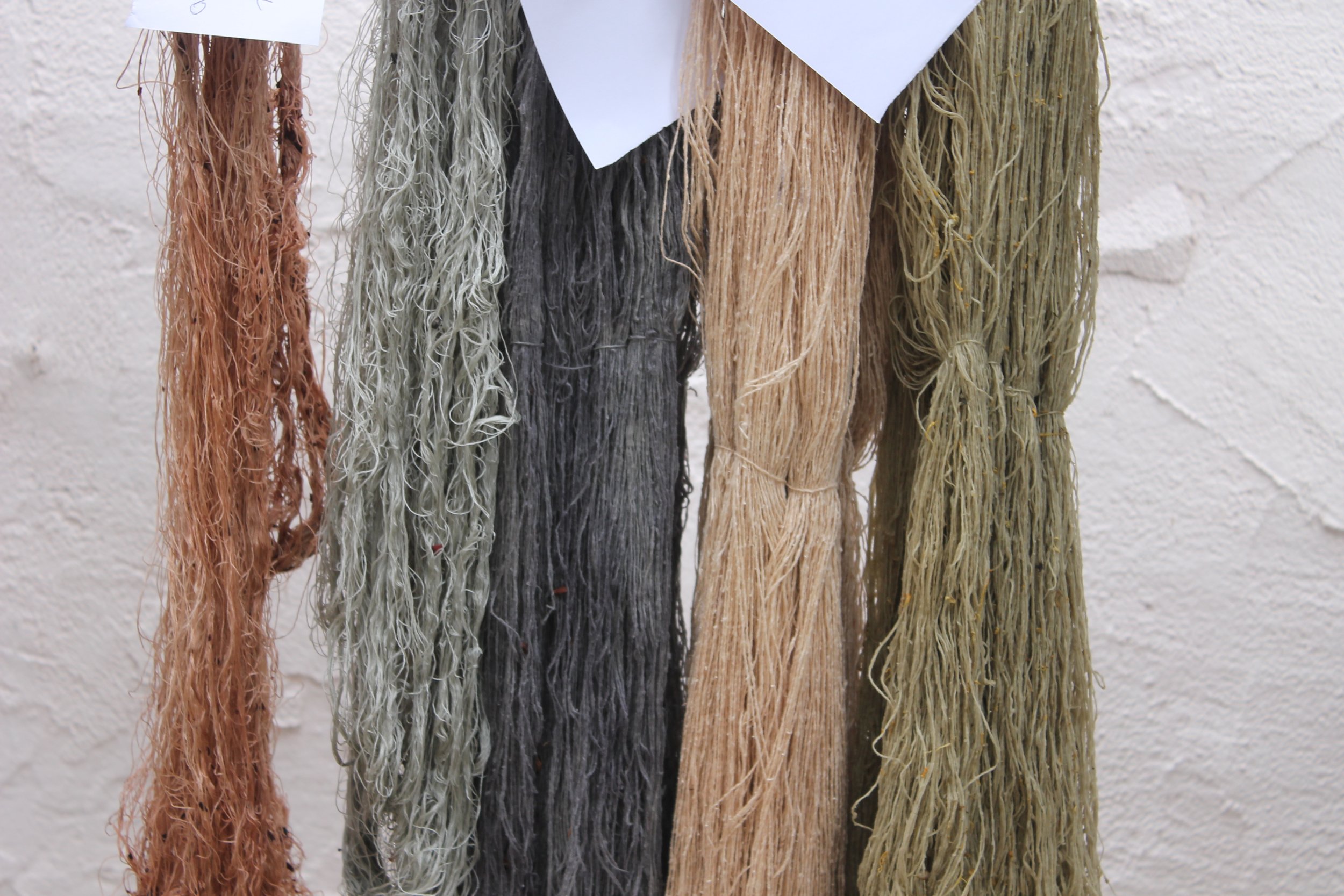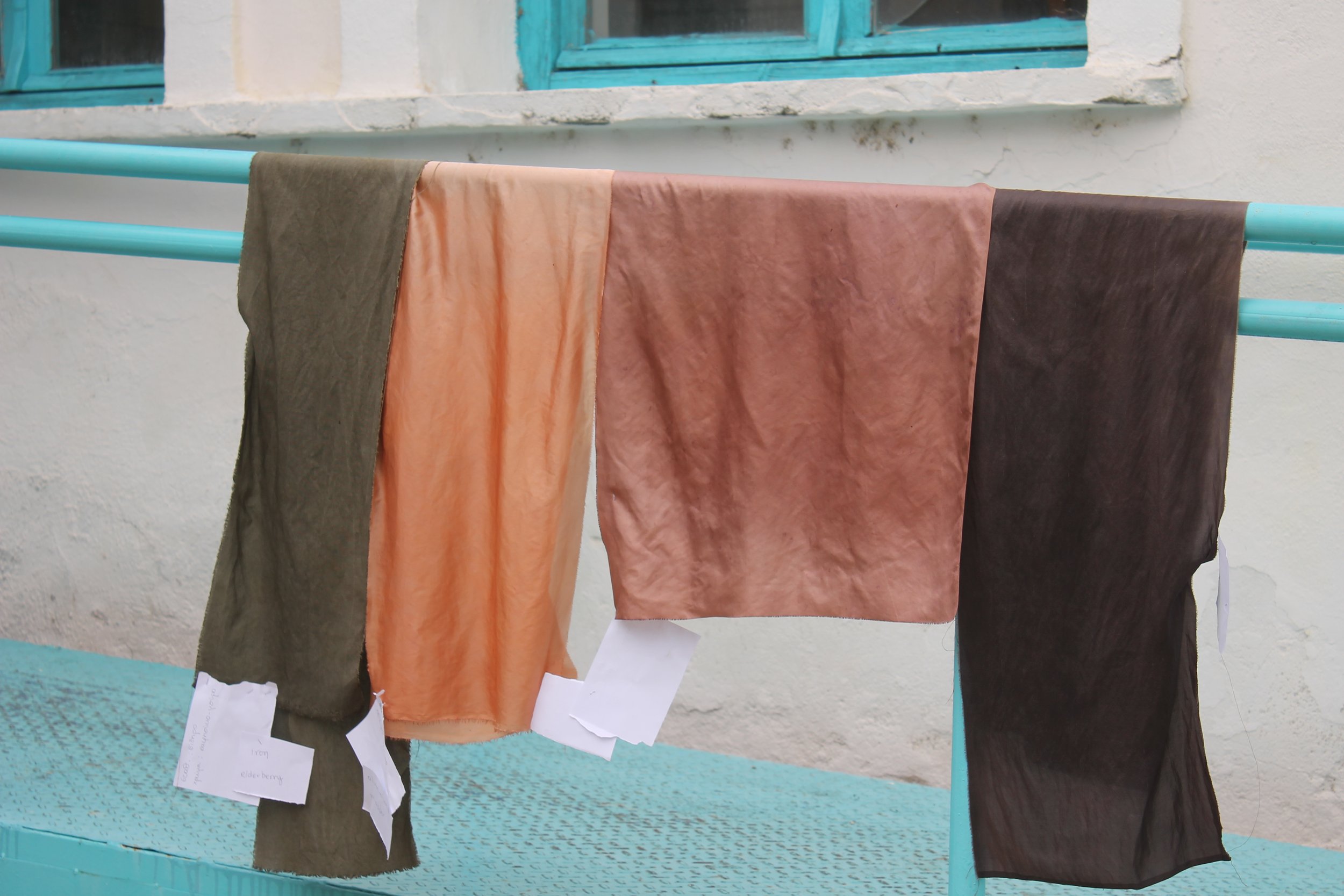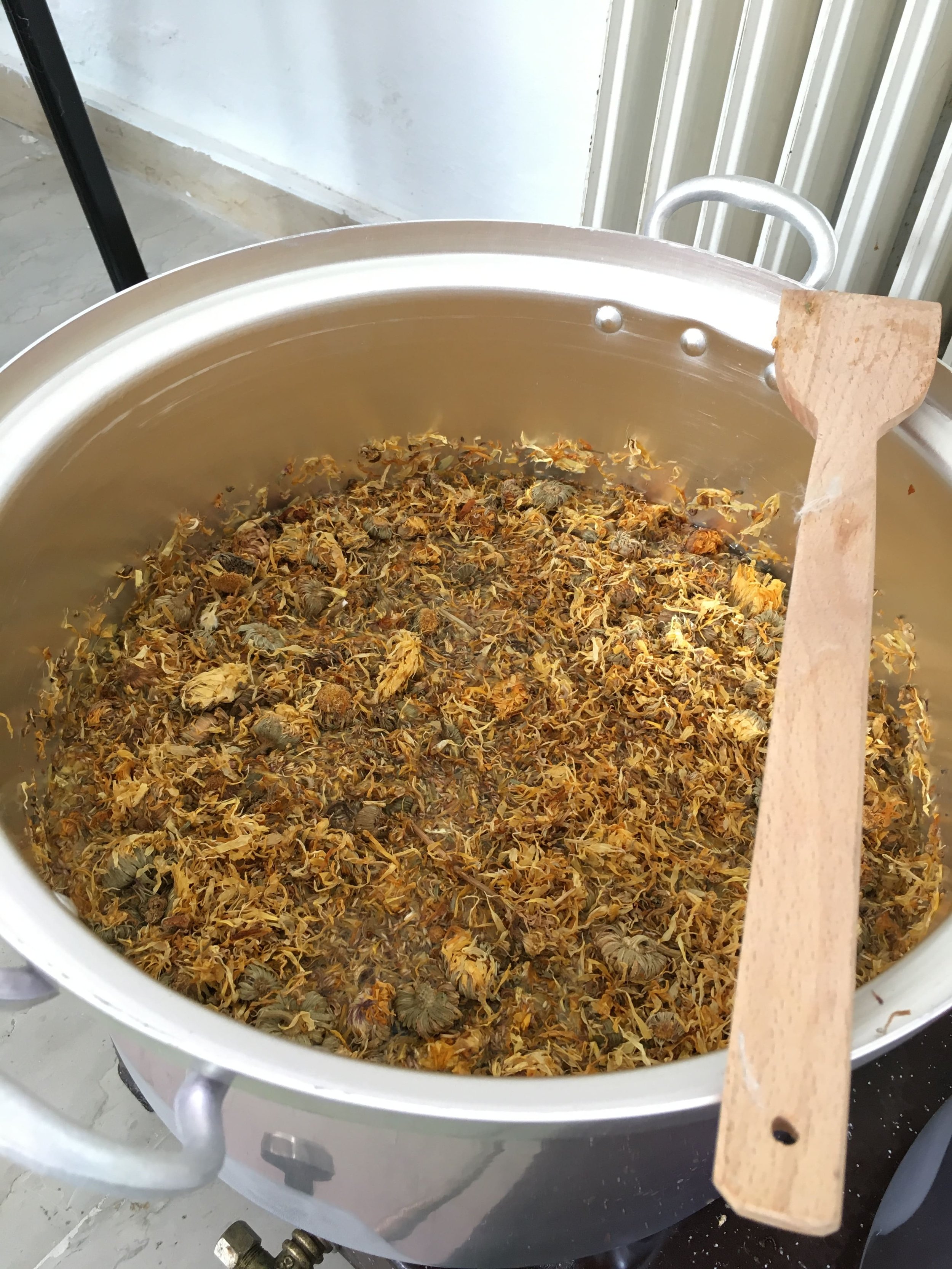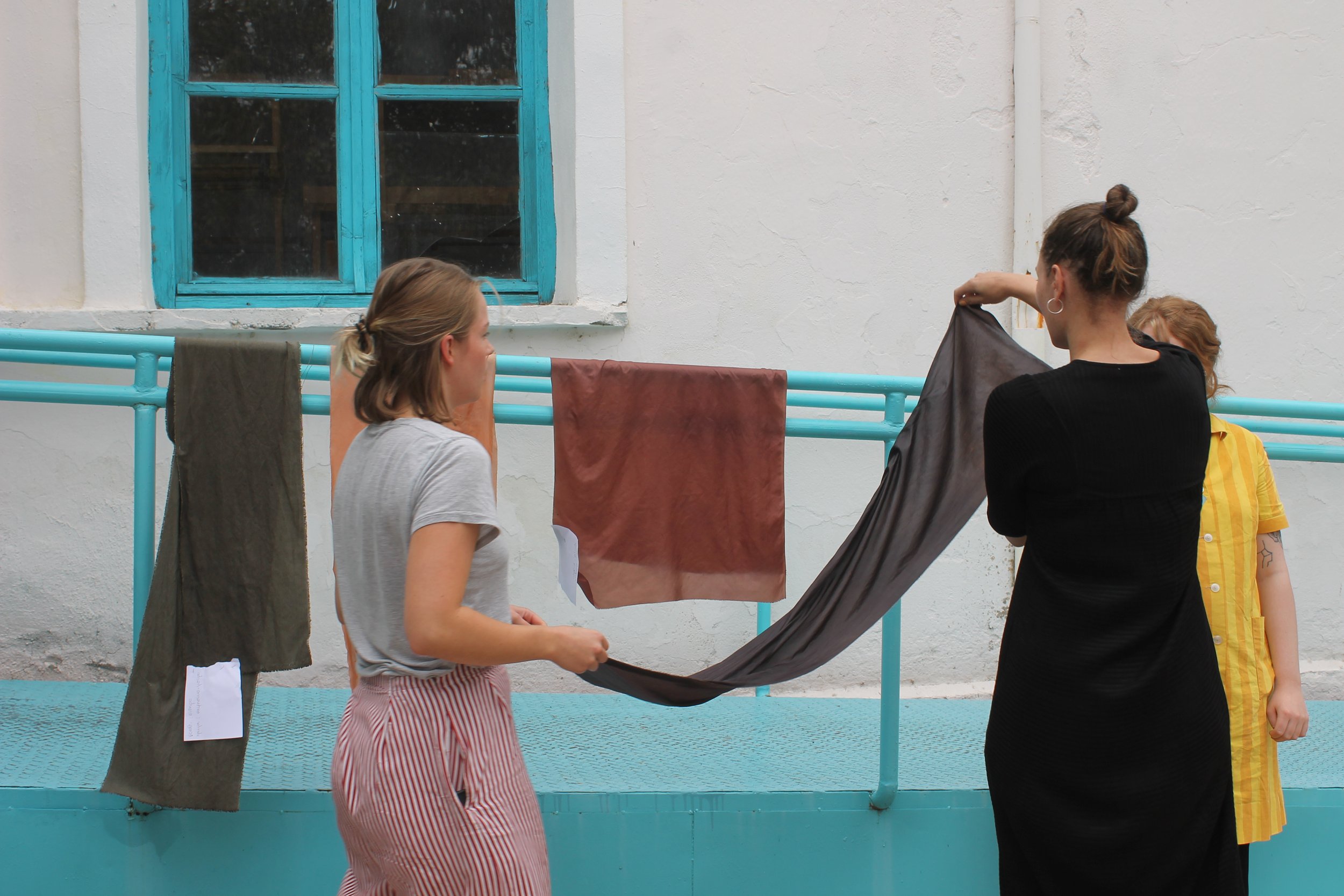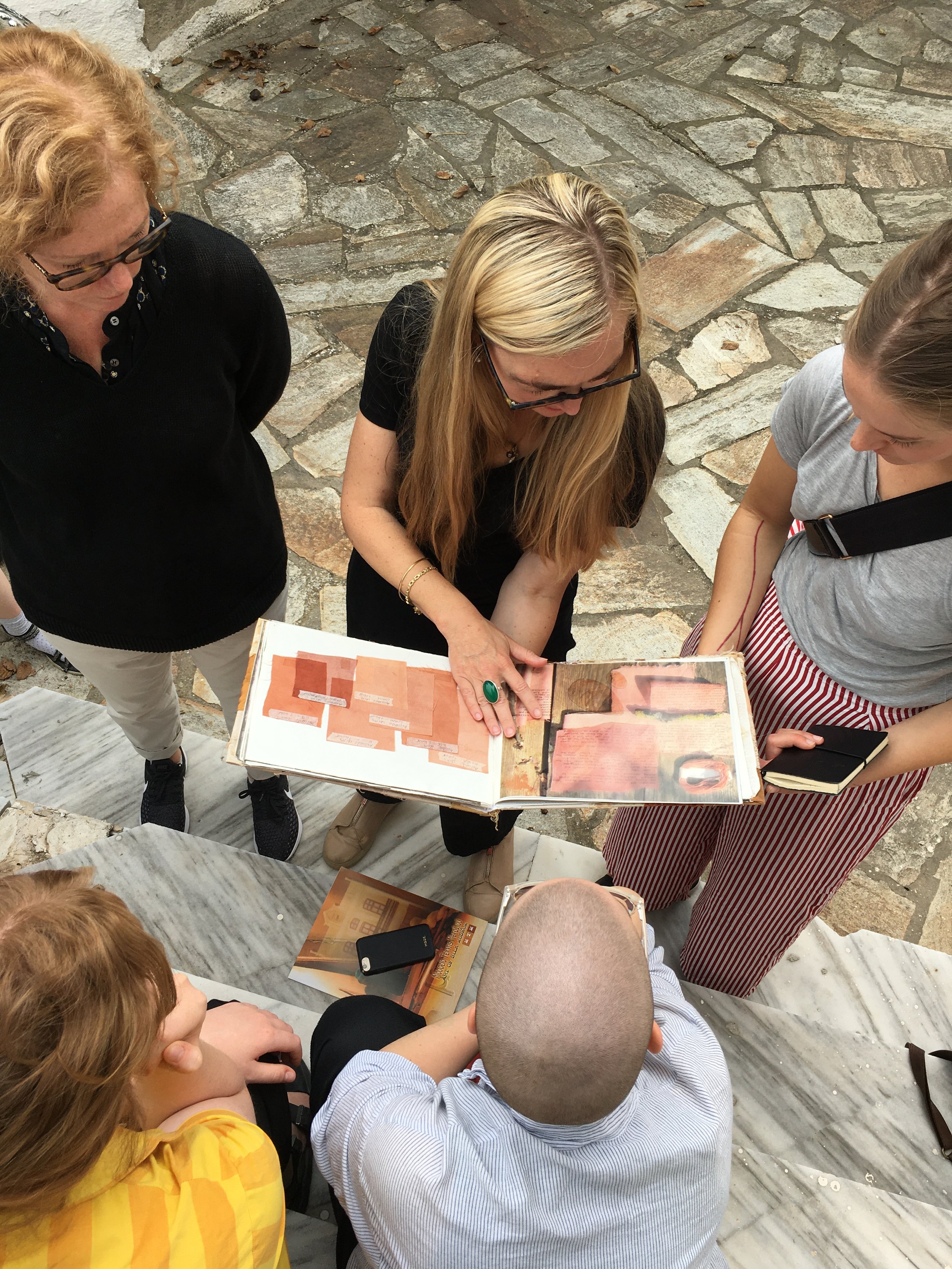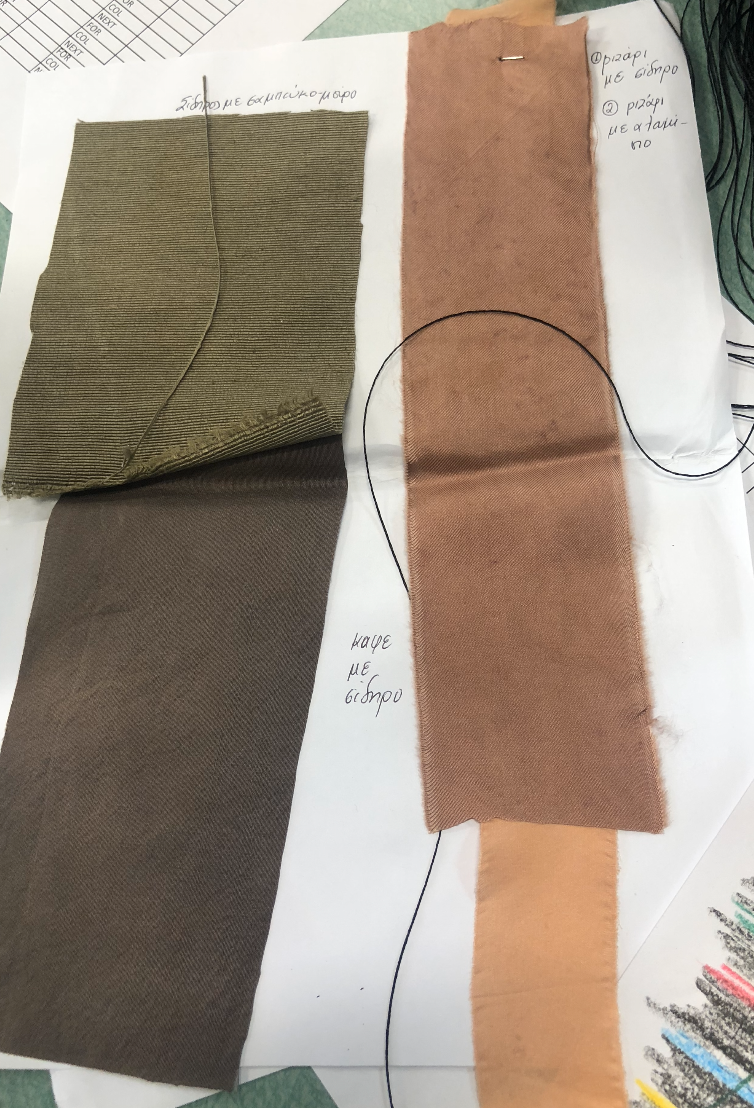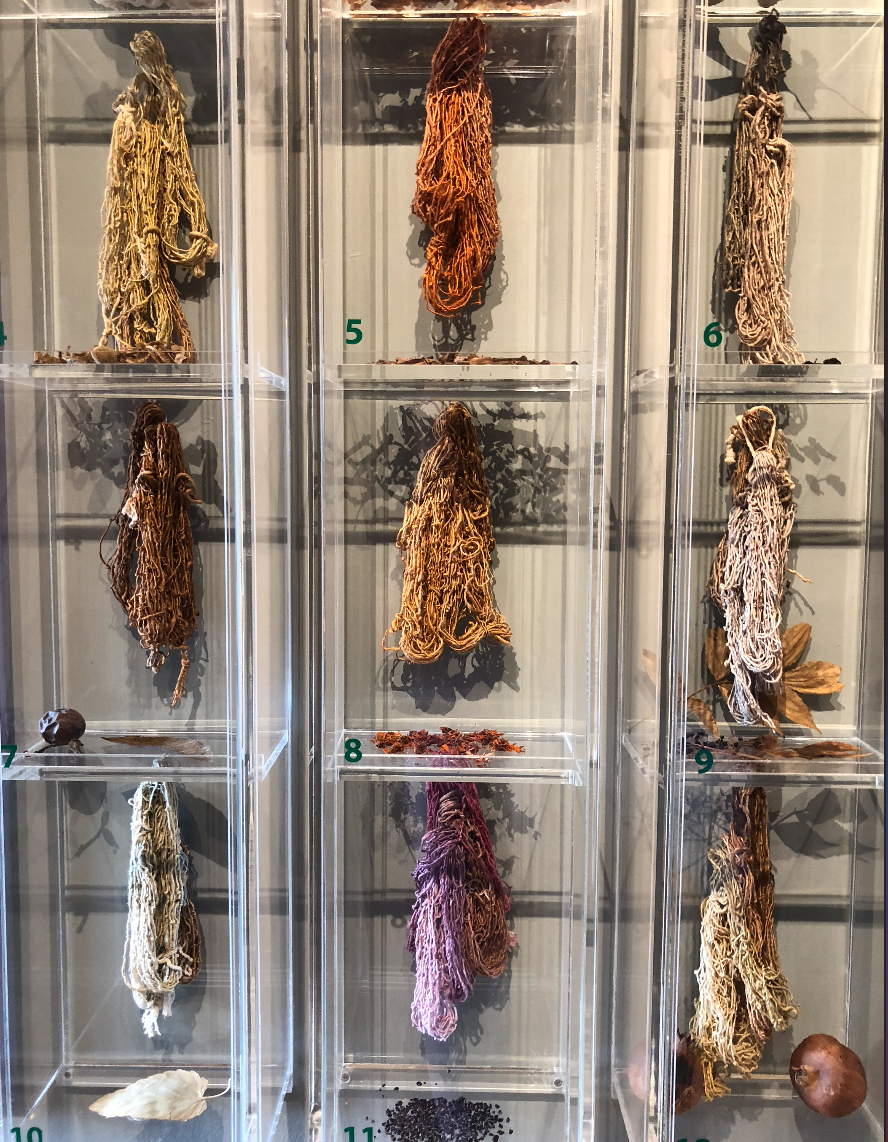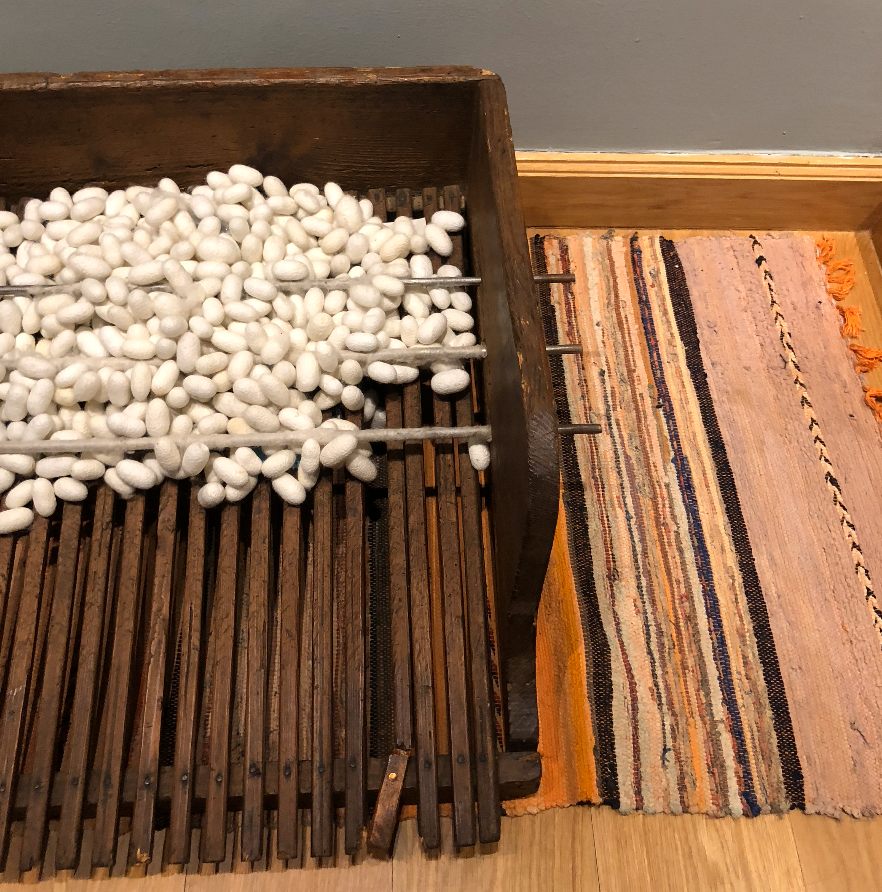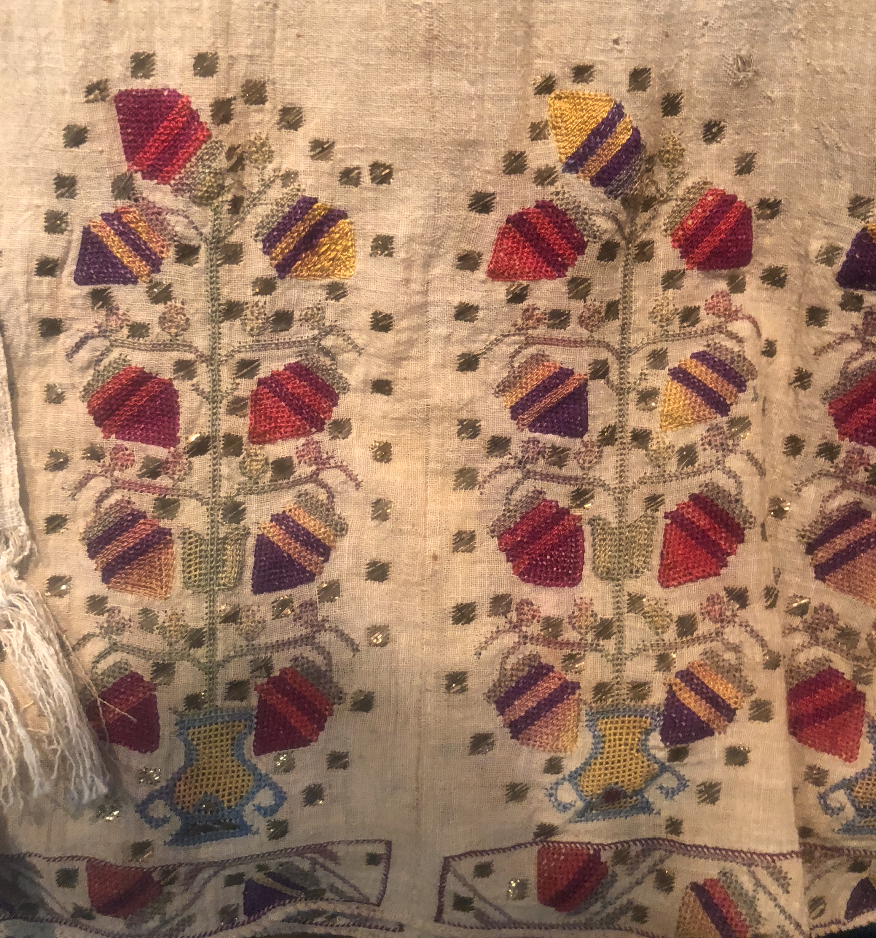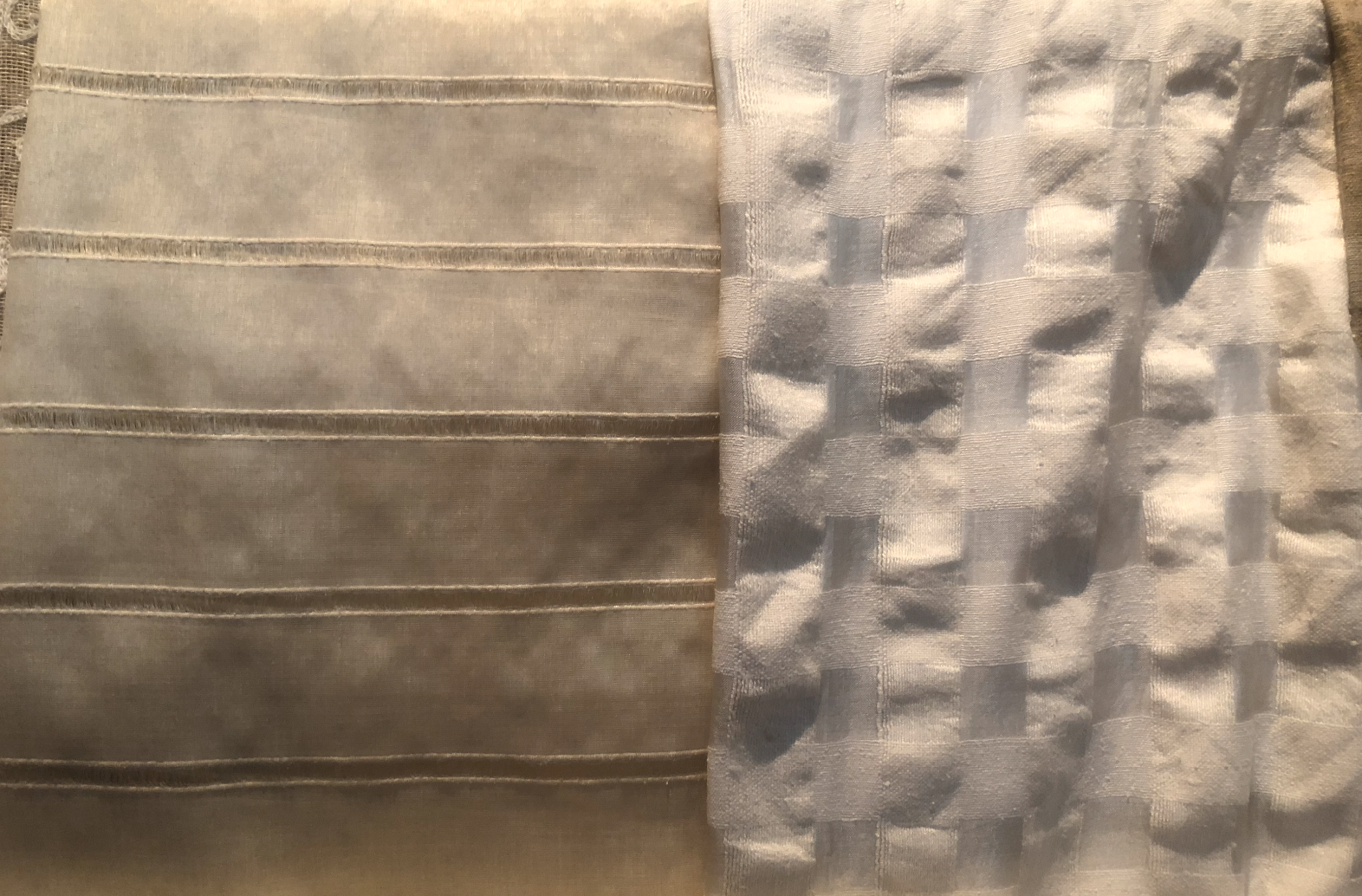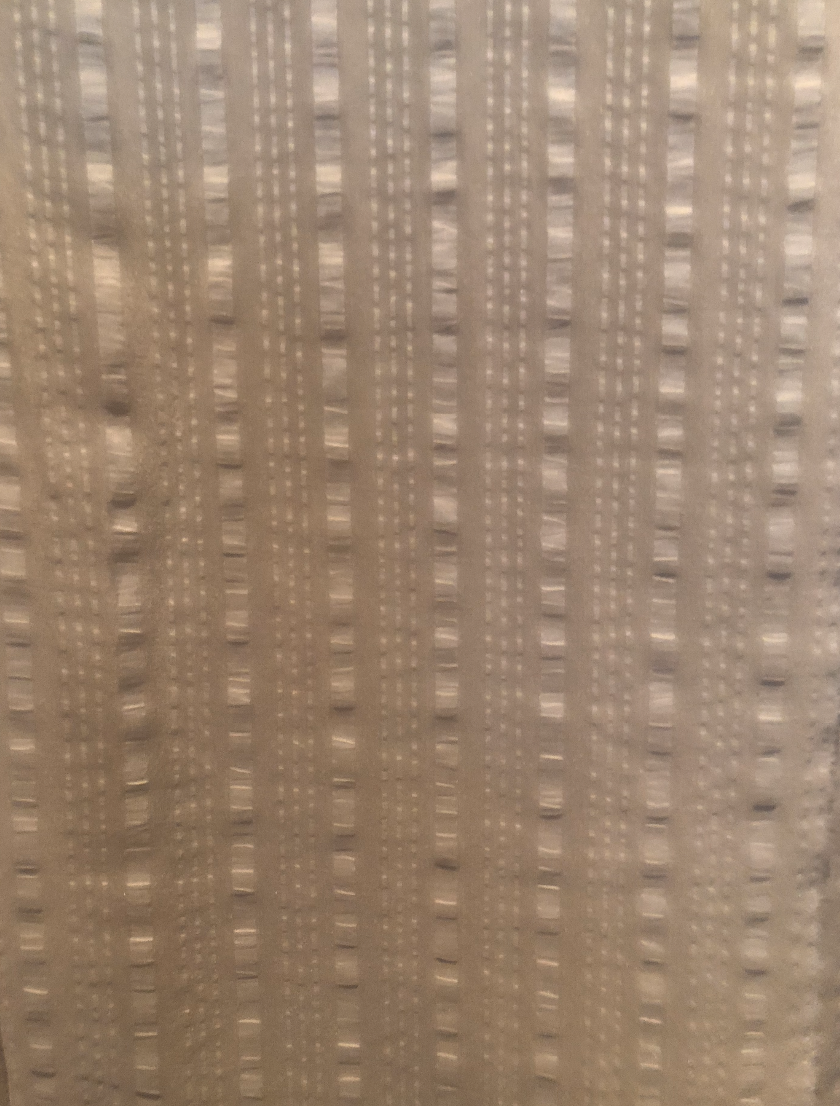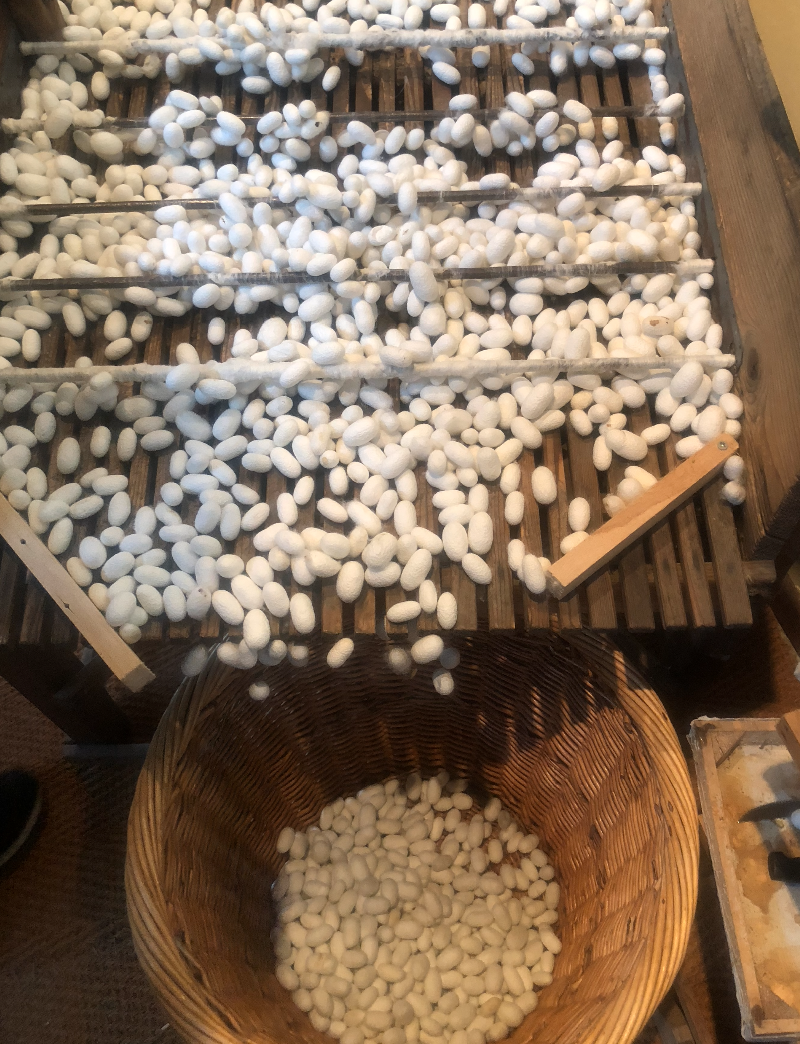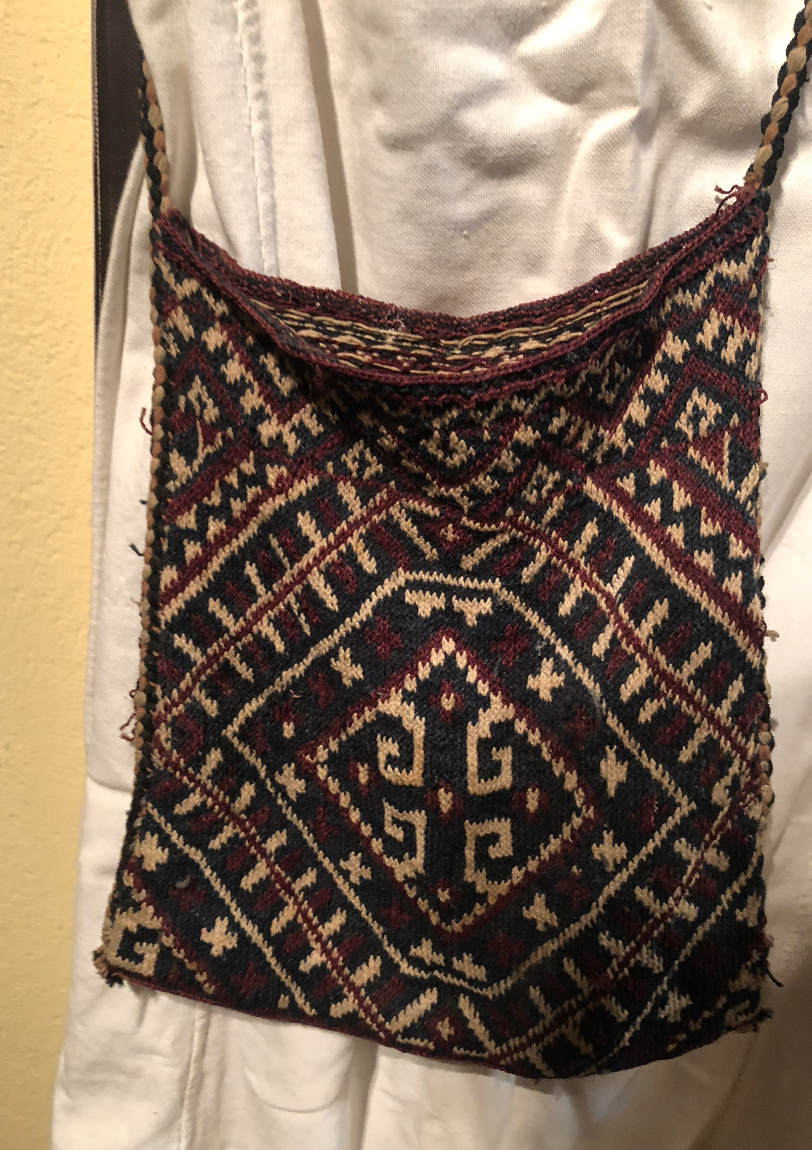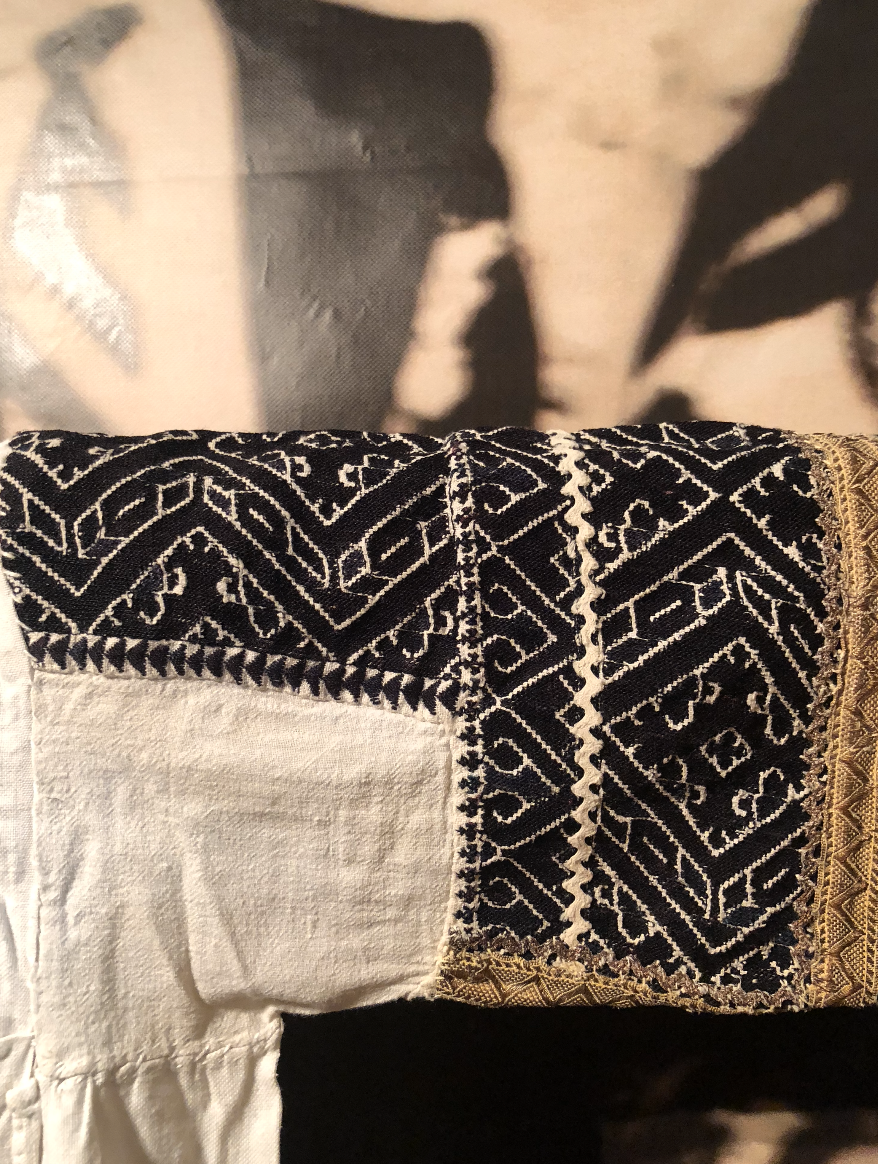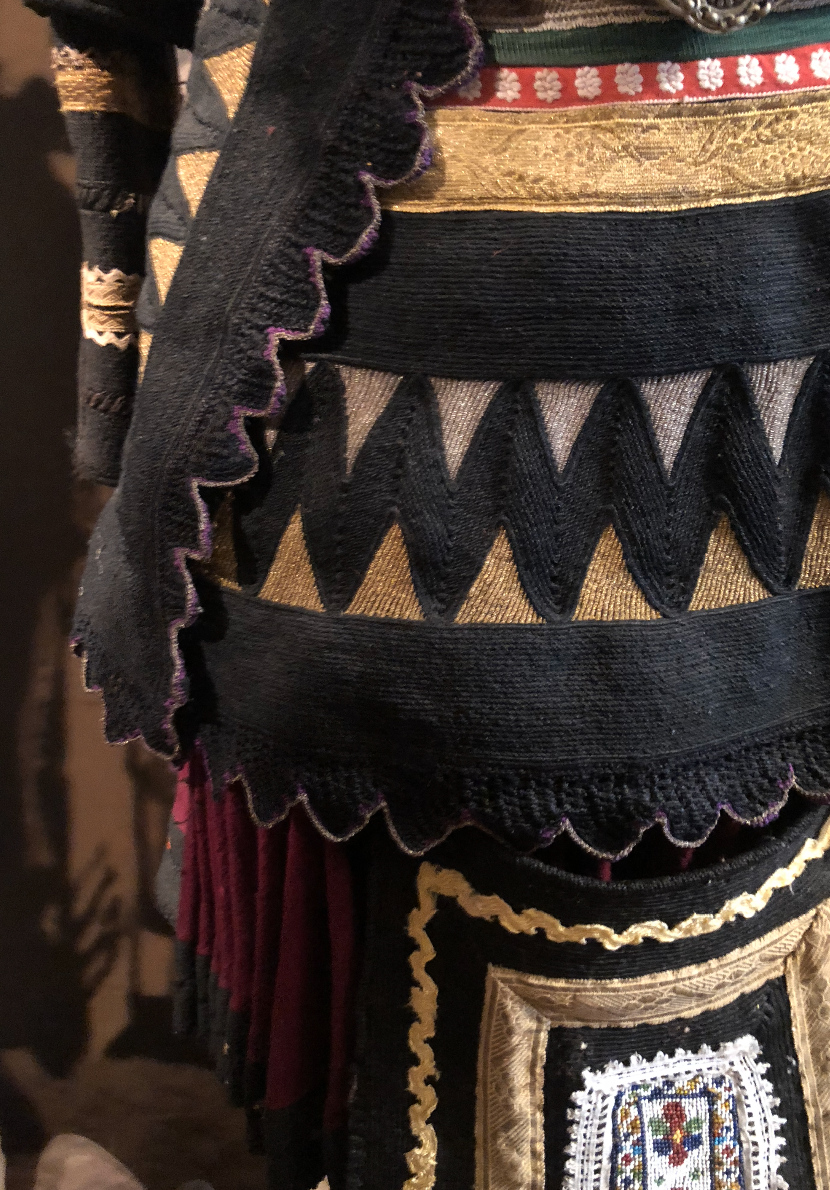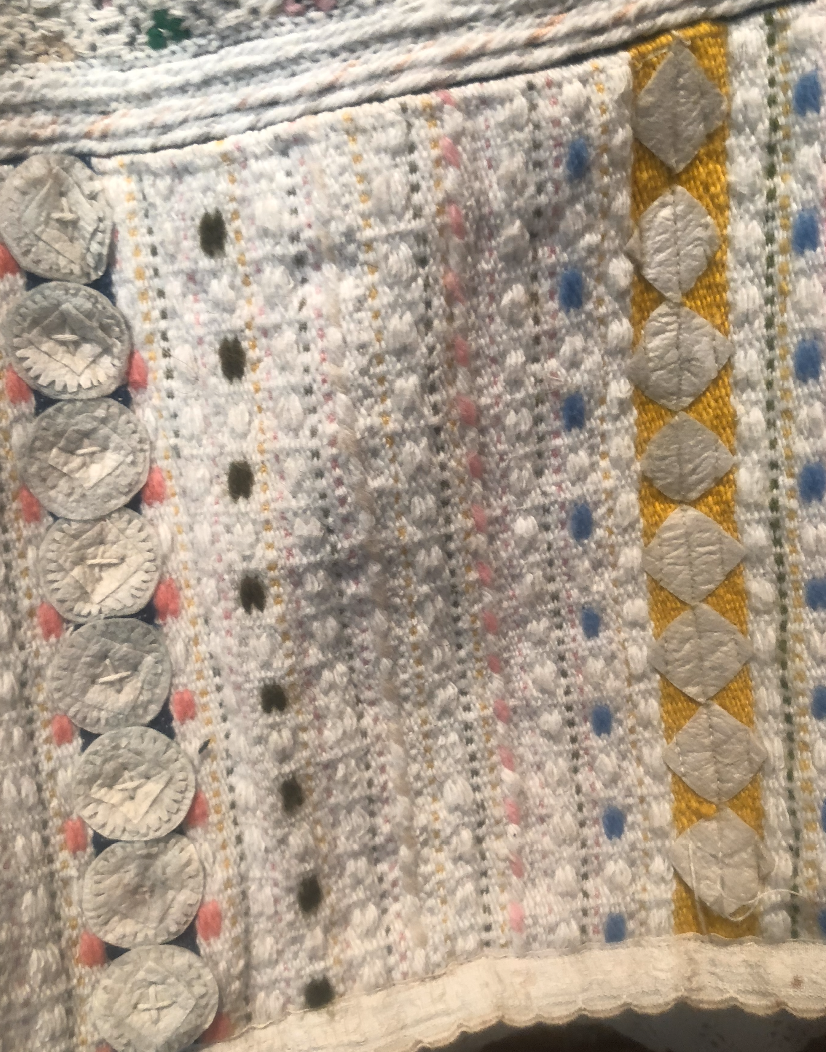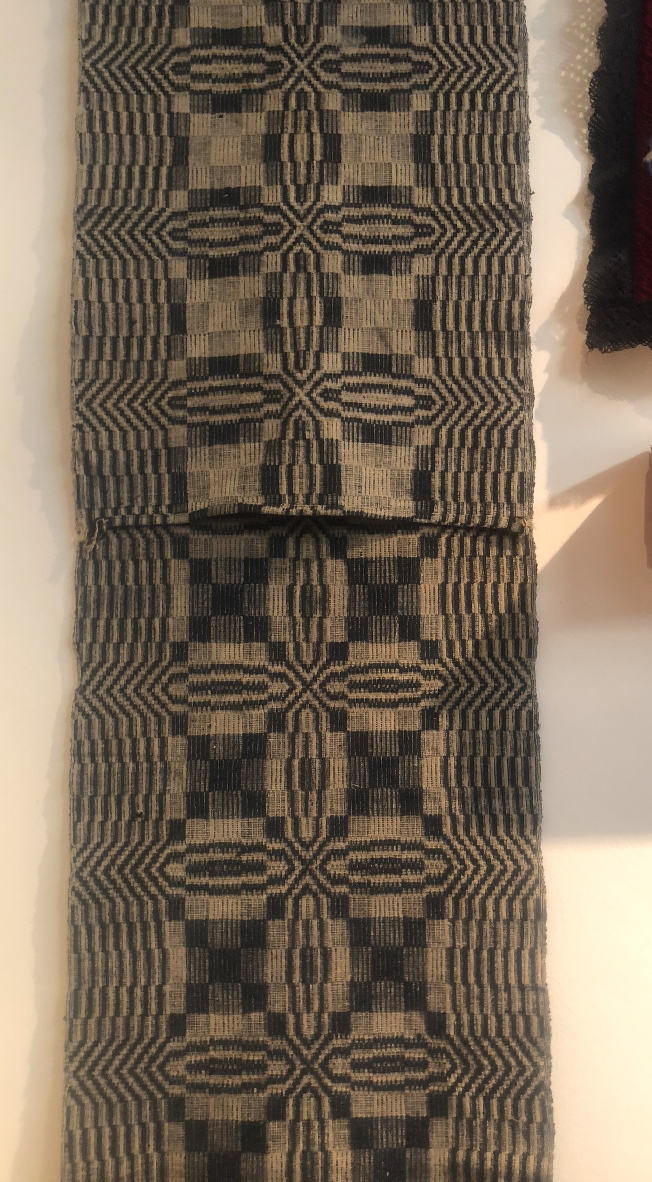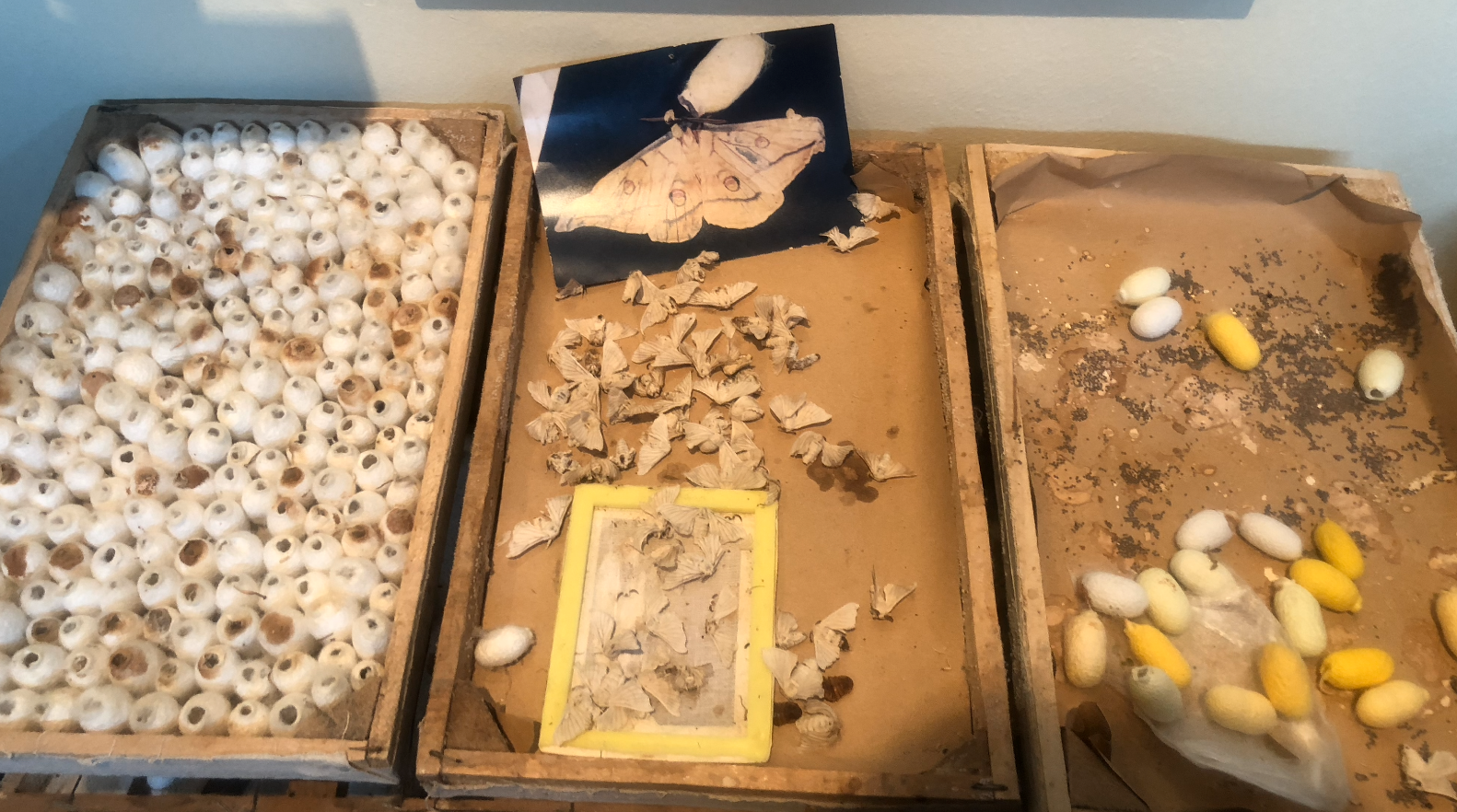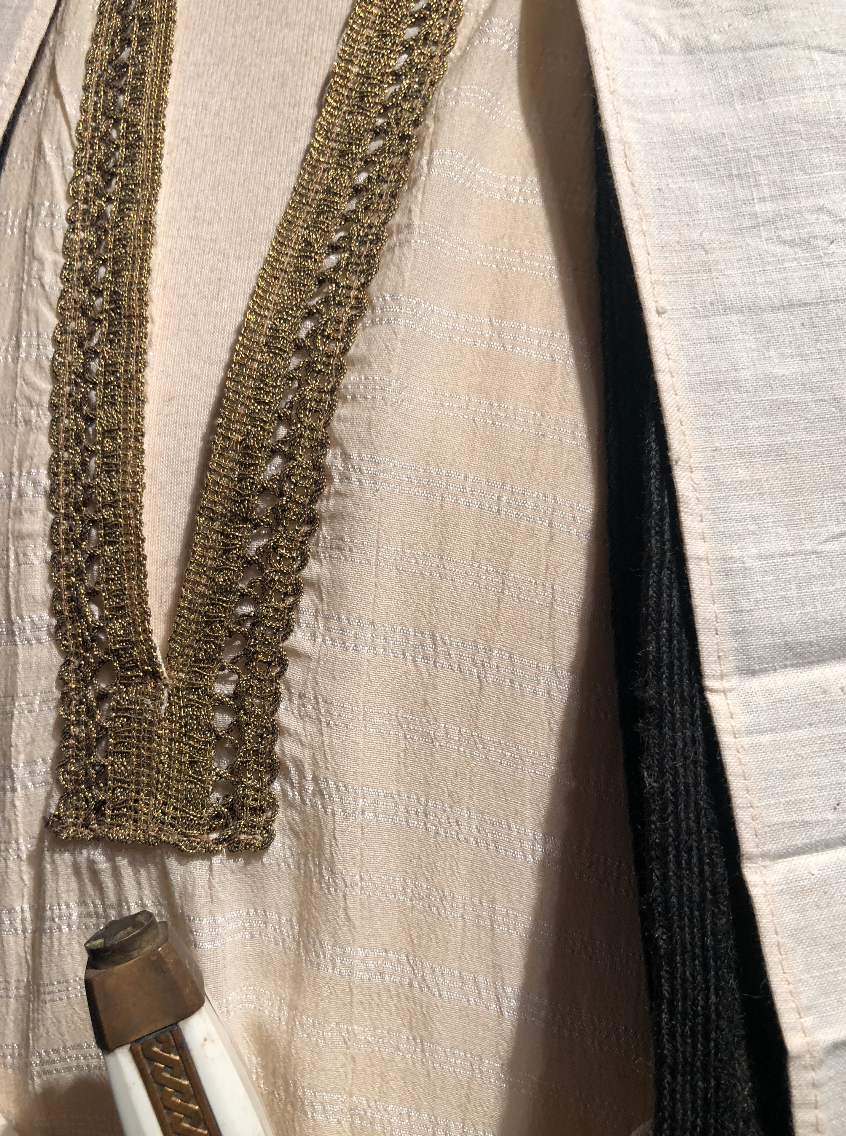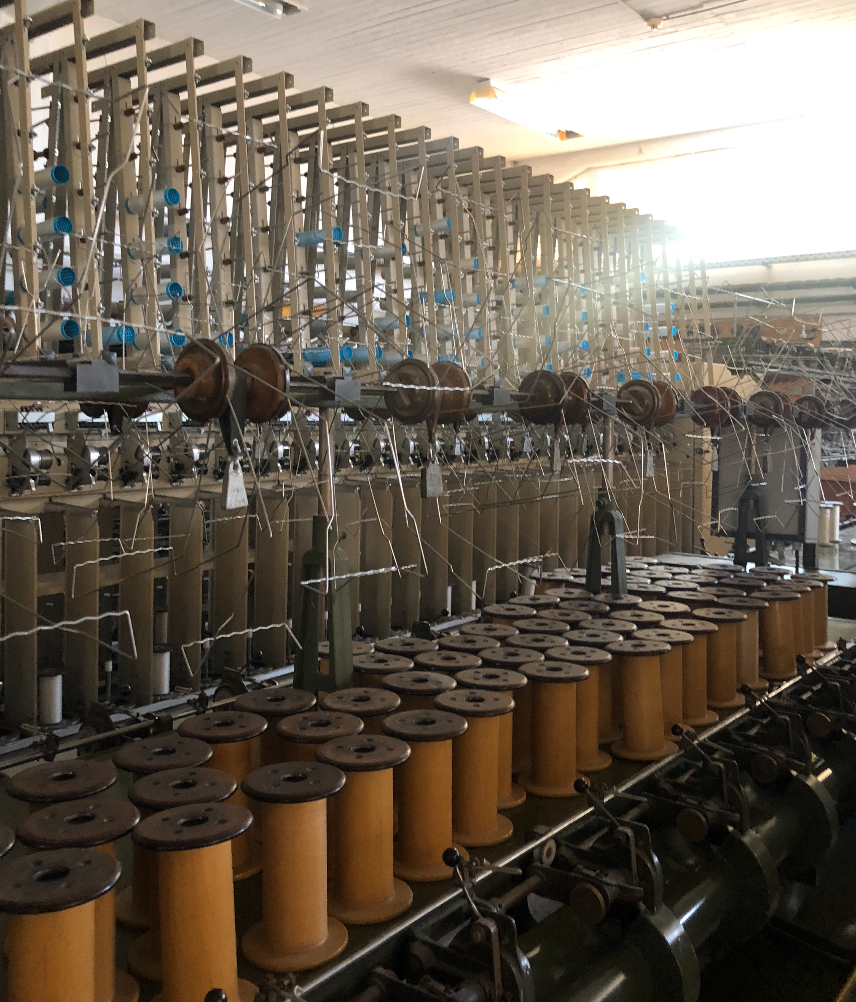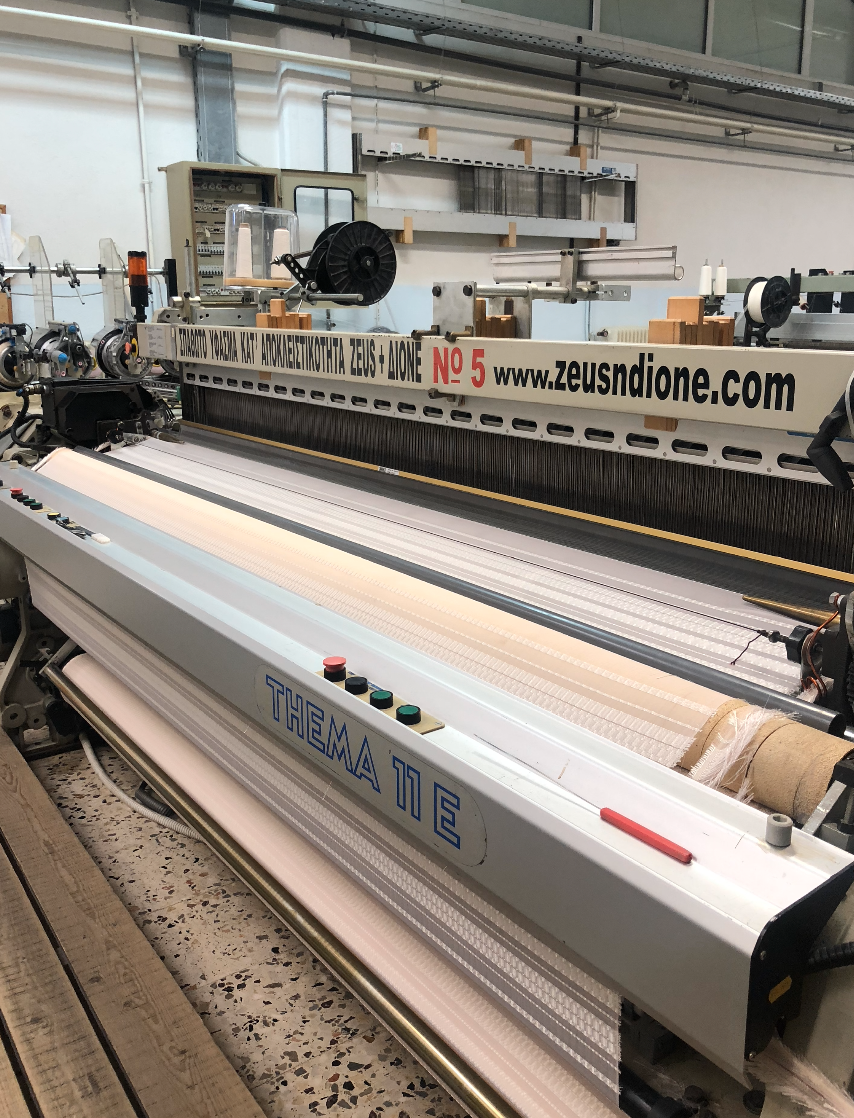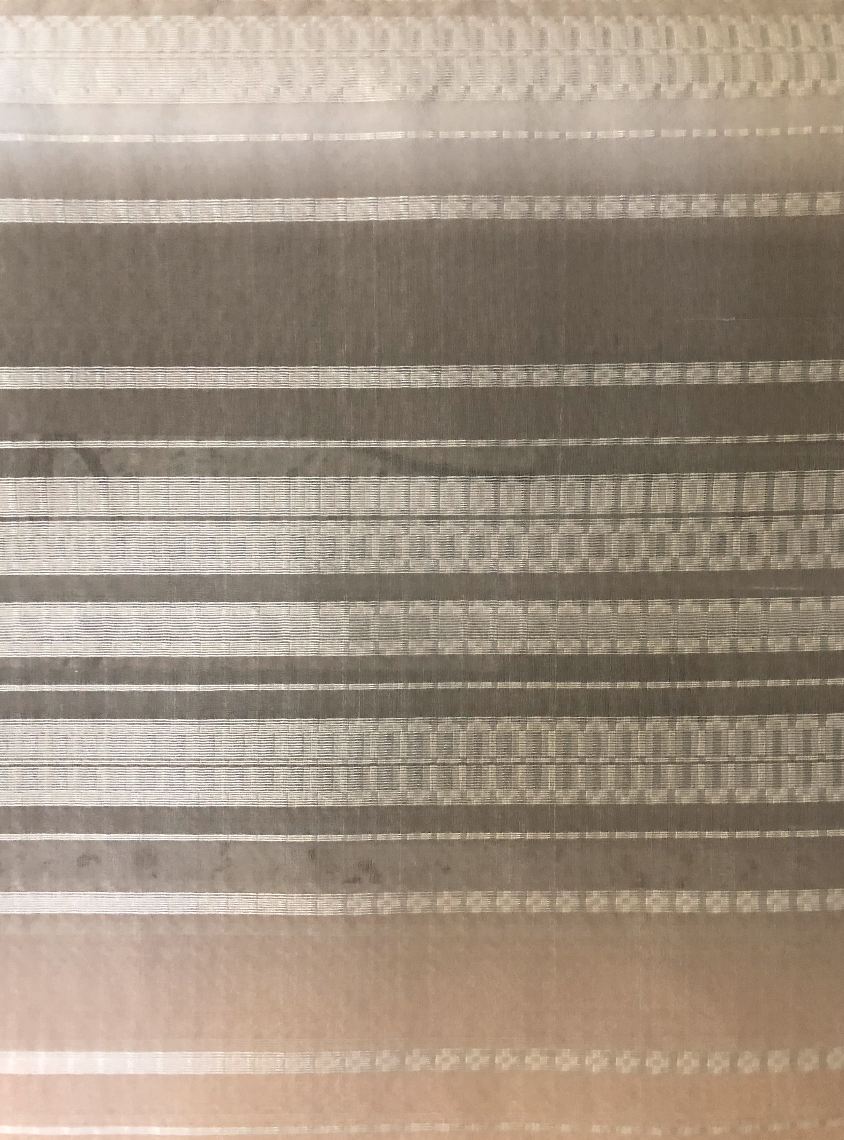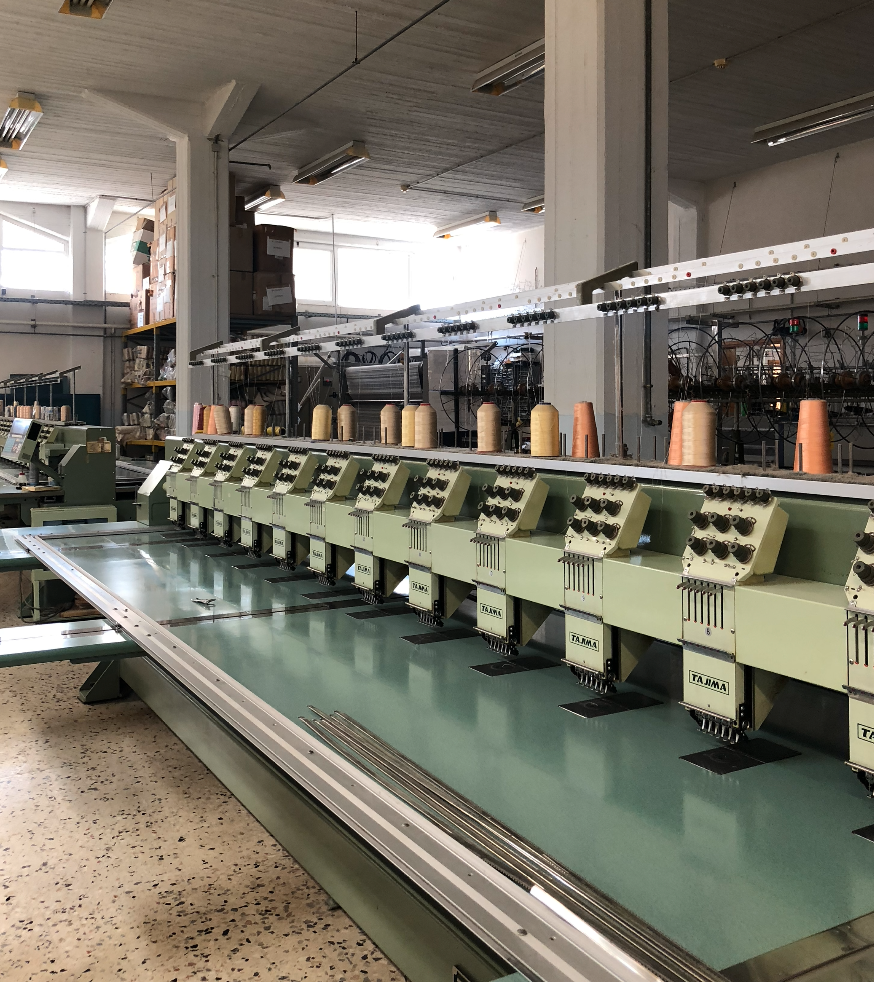Soufli August-September 2019: Teaching Natural Dyeing in Soufli, Silk Research Trip
In the beginning of August I was invited to visit Soufli, otherwise known as The Town of Silk.
Soufli is in the North of Greece, in the Evros area, close to Turkey. It is known for the silk industry that flourished in the 19th century.
I was invited there by Mr Tsiakiris who runs the Silk Tsiakiris company. He has been providing me with Greek silk and digitally printing my drawings and paintings on silk for my products this last year. His company is one of the oldest and largest silk businesses in Greece today.
I went for two days, and had the opportunity to visit two of the four silk museums in the area. I also visited textile factories and workshops, saw the digital printing, dyeing and screen-printing facilities there as well as rooms filled with looms (both old and new) and I had the opportunity to see so much silk, fabrics, yarn, cocoons and the whole process of silk production.
Mr Tsiakiris has opened a Silk Museum, called the Art of Silk Museum, in the centre of the town. It was the first museum I visited in Soufli. Marina showed us silk cocoons and explained the whole silk production process. She explained all the machinery that was used in the past, and the ones that are used today.
It was very interesting to see a big collection of different types of looms, both industrial and domestic, from many countries in Europe. The museum also exhibits haberdashery items (such as silk yarns and threads), weaving equipment (such as shuttles), traditional costume and home decorations.
I loved visiting the Tsiakiris textile factory and seeing all the machinery, how silk is spun, dyed, and woven.
We also visited an old school, that has now been transformed into a learning space. Mr Tsiakiris has collected lots of floor-looms and he is hoping to teach hand-weaving to the community. There is also a garden where he is hoping to plant natural dye plants.
Next stop was the Tzivre Silk Factory, which consists of 13 buildings and was constructed in 1909. The factory stopped all production in the 1960s. It now belongs to the Soufli municipality and hopefully will be transformed into a museum and centre of textile arts. It was probably my favourite place in Soufli, even though abandoned, it is beautiful and there is so much potential. I am hoping that it will soon re-open.
We also visited the "Brikas Mansion" which was built around 1890 by artisans from Prousa in Asia Minor (another city with a long silk tradition). The structure is unique to its kind, and one of the most impressive private buildings in Thrace. It's particular architectural form served the needs of silk farming and silkworm production as well as those of residence.
The mansion has been donated by its owners to the municipality of Soufli, in order for it to be converted into a museum. Even though it was restored during the 90s, and was transformed into a museum in 2010, for some reason it is not open to the public which is a shame. There is a lot of information about the history of silk production in the area as well as the history of the town in general. There are beautiful textile and costume examples of different eras as well as photographs of how Soufli used to look like. I was very lucky to be able to visit this mansion.
In September, I went back to Soufli for a few days, this time to teach two Natural Dyeing workshops.
Students from the Konstfack - University of Arts, Crafts and Design and students from the Athens School of Fine Arts were visiting Soufli for a few days to learn about silk production and different textile techniques.
After meeting Mr Tsiakiris in August, we decided to collaborate and I taught two Natural Dyeing Workshops to the art students that were visiting. It was an amazing experience and the first time I was teaching. After these workshops, I started hosting natural dyeing workshops in my studio in Athens too.
In these two workshops I briefly talked about natural dyeing traditions in Greece and then explained the process of natural dyeing. We used four natural materials: Madder roots, elderberries, oak bark and marigold flowers. We used two mordants: Aluminium Acetate (which is what I use for protein based fabrics) and Iron Water.
Madder roots contain alizarin which is one of the most valuable red dye pigments ever known. Madder is one of the most ancient dyes in existence and can be traced back as far back as 3000BC. Madder was cultivated throughout Europe and the Middle East.
Greece had loads of madder and you can still find some in the North of Greece. Unfortunately now its not cultivated anymore, but apparently it still grows in the wild.
One of the reasons why I love madder is that the colour possibilities are endless. From reds, to pinks, to browns, to oranges, corals and purples.
Marigold flowers are native to Southern Europe, and they can be grown in most temperate regions. The flowers give shades of pale yellows and olive-brown. We used dried Marigold for our experiments in these two workshops, however, there were marigolds growing in gardens all around Soufli. The flowers have healing properties and are used for creams and ointments. They soothe the sore skin, sunburn and wounds.
Elderberries can also be found in Greece. Elder is a common, fast-growing small tree or large bushy shrub. It's leaves, berries and bark are all dye sources. Elder was once regarded as a magical plant that kept the devil away. The berries are reach in vitamin C and are used to make jams, relishes, wine, juice and a drink for sore throats. Elderflower is commonly used as a skin cleanser. Fresh berries give purples and sometimes reds, while dried berries give shades of red and brown.
Oak is a very common Greek tree. All parts of oak contain tannin. Oak leaves, bark, and acorns also produce ochre, beige, and grey colours. The tannin from oak bark was extracted and used to tan hides for centuries.
We naturally dyed on silk yarn, raw silk yarn and many different silk fabrics. The results were all very beautiful, and everyone got small swatches of every colour to add to their swatches.
I really enjoyed teaching in both English and Greek and I am very happy I had the opportunity to collaborate with Mr Tsiakiris.
While I was there this second time, I visited the other two silk museums of Soufli.
The first one was the Gnafala Folk Art Museum. It contains the private collection of the Bourouliti family and exhibits the everyday life in Soufli. Gnafala (Γνάφαλα) in Greek is the first silk thread that is produced by the silkworm.
The museum opened in 1998. The collection is divided into sections: the household, the woman, the children, the man, the couple, the silk, agriculture items, religious items, music & celebrations. Some of the clothes in this collection are masterpieces, beautiful embroidery, appliqué, weaving and colour combinations.
Next, we went to the Silk Museum, which belongs to the Piraeus Bank Group Cultural Foundation.
The Silk Museum presents all the different phases of sericulture (silk production & manufacturing) in detail and focuses on how the town of Soufli became a major silk-producing centre in the late 19th through to the mid-20th century.
The museum introduces you to the architectural, social and economic context of the period that made the town of Soufli a major silk-producing centre in Greece. There are many documentaries that are projected throughout the exhibition which help understand the process as well as the local society, economy and culture.
My favourite part was the Natural Dyeing Section of the Museum, which consisted of silk skeins dyed with: Onion Skins, Fig Tree Leaves, Almond Tree Leaves, Madder Roots, Black Mulberry Tree Fruit, Walnut Leaves, Cosmos Flowers, Elderberries, Black and White Mulberry tree Leaves, Pomegranate Skins and Kermes (which is the Greek equivalent to Cochineal).
There was information about the reeling and spinning of silk as well as silk weaving. There were many weaving objects and looms on display too. There was a lot of information about female workers and silk mills as well as traditional costumes of the Soufli area.
They also had a temporary exhibition in collaboration with a museum in China. The exhibition was about silk and how it is used in China showing different textile techniques such as dyeing, weaving, embroidering, indigo dyeing, shibori and tapestry weaving. It was really interesting to compare their techniques and colour combinations with the Greek ones of the same period.
Finally, on my last day we visited the Mouhtaridis Silk Factory. It was really nice to see this factory as well and all the industrial looms there being used. Zeus and Dione, one of my favourite greek fashion brands produces their woven silks from this factory and we got to see the machines and some of their fabrics being woven.
It was such a big shock to see how quickly the industrial weaving loom works and how many meters are produced in just one minute by pressing a button! We also had the opportunity to choose different coloured silk threads and design a small pattern that was then woven (using the industrial machine) in front of us.
I loved both my visits in Soufli, this place definitely has a place in my heart. The people there are so welcoming and I am very happy I am collaborating with them. There is so much history and so much potential and I really hope that I will be back soon! If you are ever in the Evros area, you should definitely visit Soufli!
xx
Christiana
